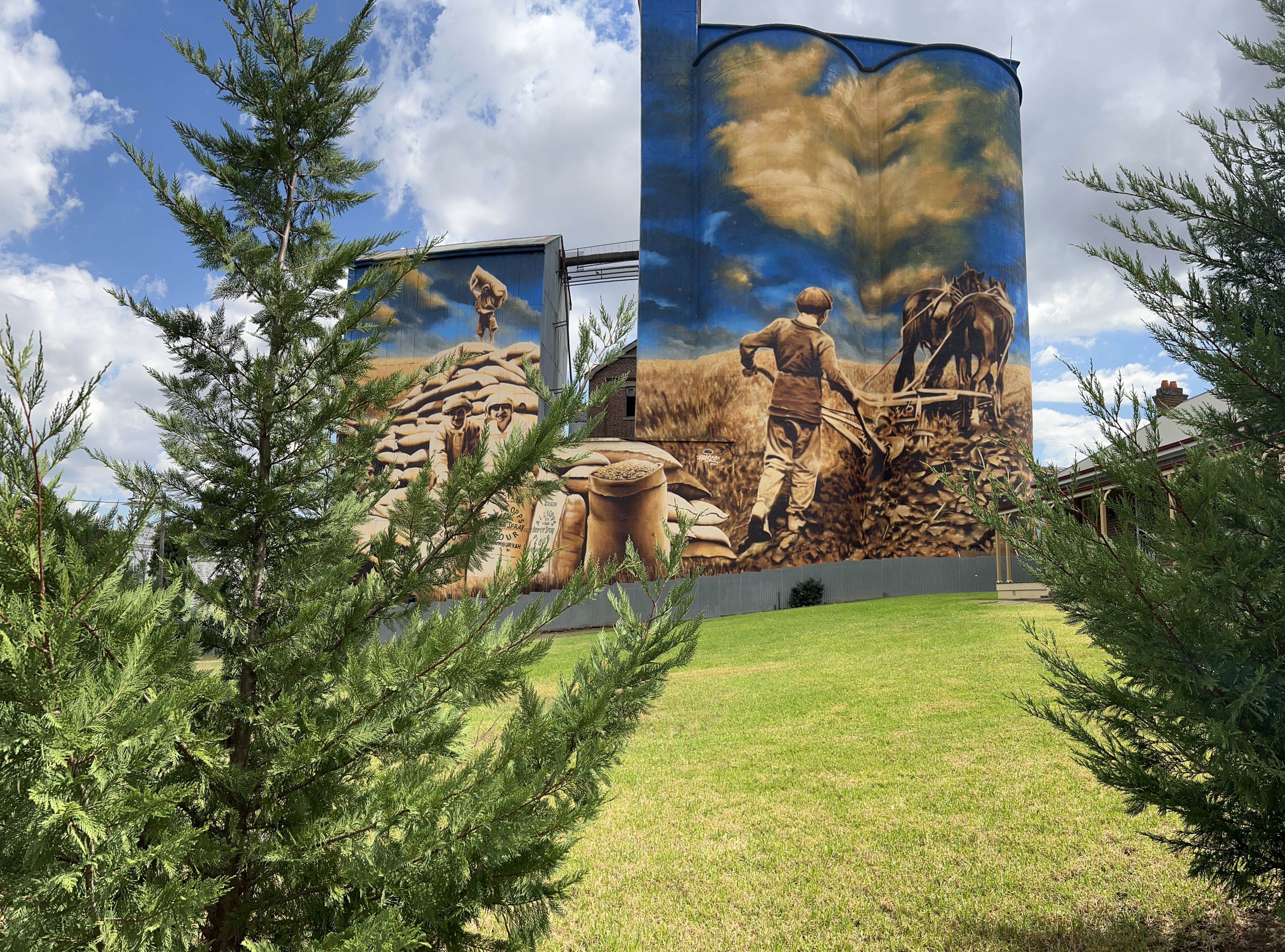Road tripping in our own backyard
The Australian Silo Art Trail: a sight for sore eyes
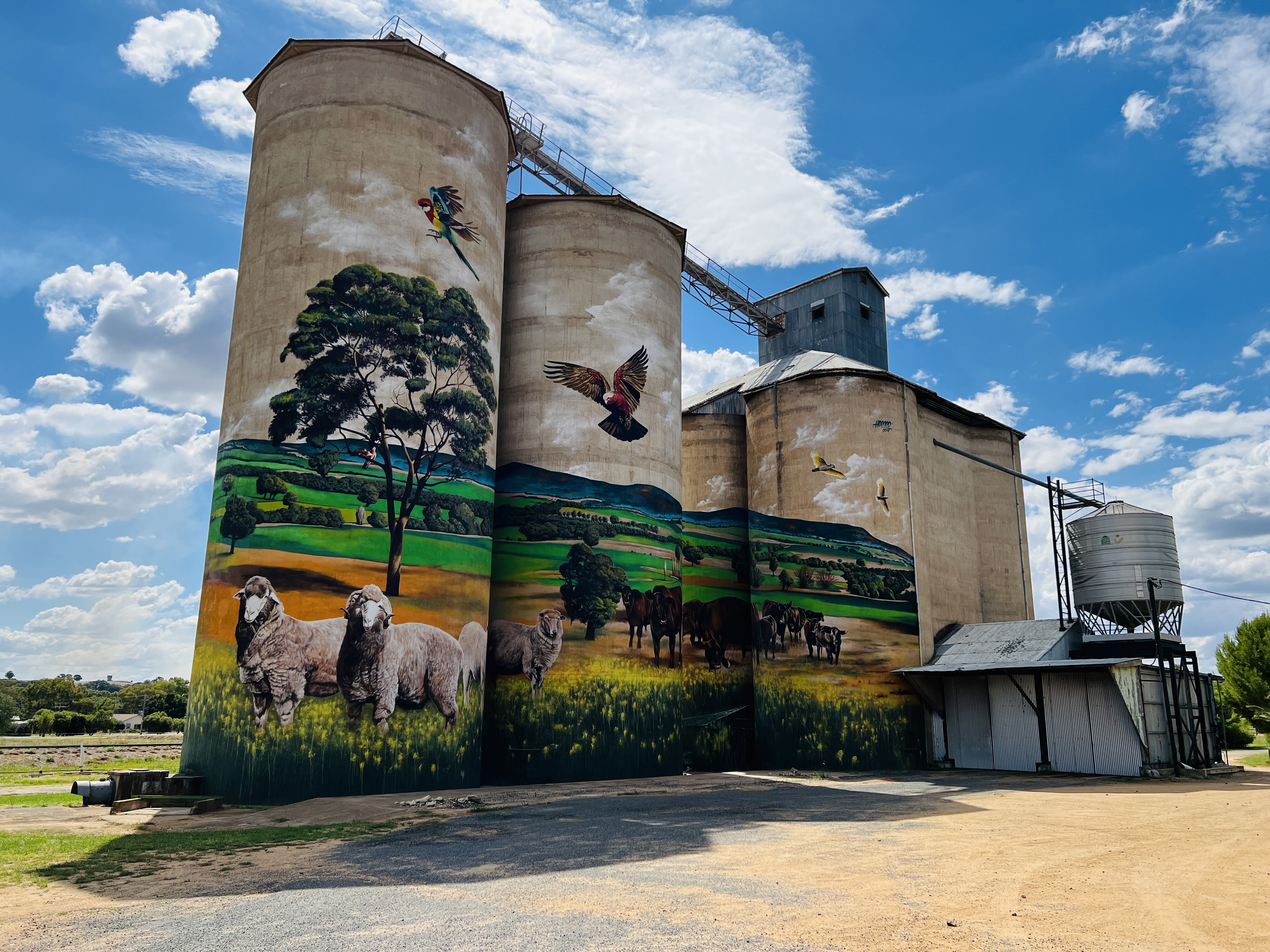
Rural Australia. A daunting world to enter for any city slicker, and maybe too daunting to plan a holiday passing through, or is it?
Yes, all the major cities have a 100 restaurants and bars to enjoy the city skyline darkening the surrounds, but what can a breath of fresh air and a different view of rural Australia offer?
The answer – colourful, awe inspiring silos standing tall over many almost forgotten towns.
Rolling green hills, different shades of dirt roads winding through and over them and usually just one asphalt road running into the horizon.
The wind is soft. Eyes closed I can feel my loose hair-strands tickling my face. There is a faint smell of rain in the air carried past my nose along with the crisp pine scent I am all too familiar with. Autumn leaves rustle past, cows mooing far in the distance, it feels like a place I could recharge my soul to survive in this chaotic world.
This place is quite but the world you can hear far in the distance hurrying towards different destinations. It makes the silence seem restless. There’s a soft breeze in the air, fizzling through new life that has started from the recent rain.
The far cry of a magpie can be heard in the distance, calling desperately to something or someone to listen. Other birds are singing softly, cicadas buzzing on and off.
The breeze heavier now approaching leaves that have expired - rustling them apprehensively as it passes.
As you approach the almost forgotten town laying in front of you, you start to see silos, large cylindrical structures standing tall, peppering the horizon with their bland design.
Generally, they are used to protect silage and keeping it in a succulent and slightly sour condition edible for farm animals, but today in Australia a number of them bring a splash of colour to the infrastructure that is typically designed to blend in.
In 2019, The Australian Silo Art Trail (ASAT) website was created by Western Australian grey nomads Annette and Eric Green after they set out on their own great Australian road trip. They first visited three grain silos in Ravensthorpe, Western Australia and set out to find more of these incredible sights. Finding out there wasn’t a lot of resources to located many of them, they created the website to be just that, one resource many travellers can utilise to visit truly remarkable art pieces in some interesting places.
The first silos to be painted stand in Western Australia and it was ground-breaking for bringing renewed emphasis to the positive perceptions of the regions and their people, as well as the unique canvas the silos provide.
A similar idea for Victoria was conceived in 2016 after its first success of silo art in Brim and from there, the Silo Art Trail grew and expanded.
Travelling through NSW up to Queensland or down to Victoria and South Australia, and even stretching a holiday as far as WA, there are over 50 completed silos to be seen to truly be believed; this is the Australian Silo Art Trail.
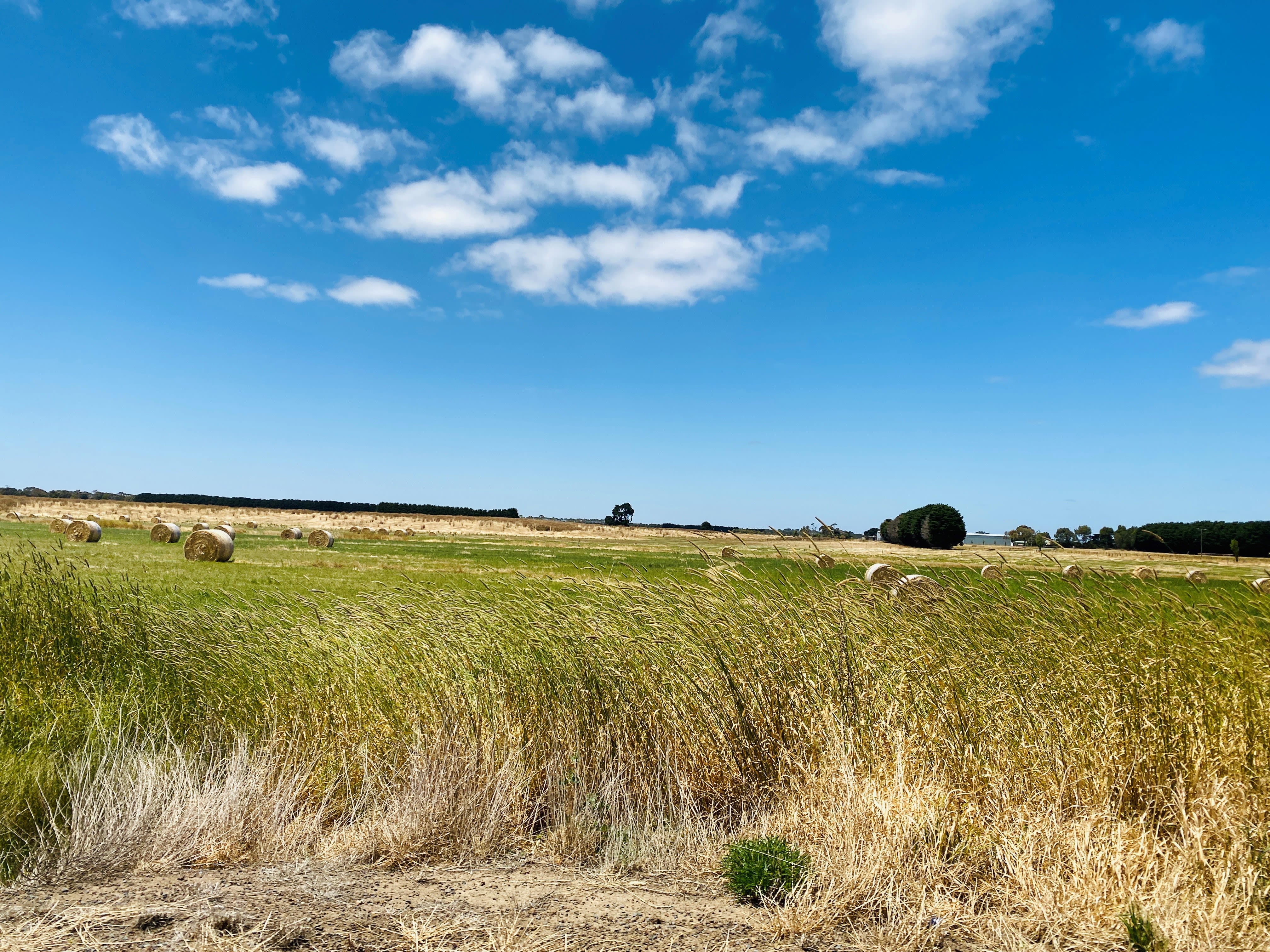
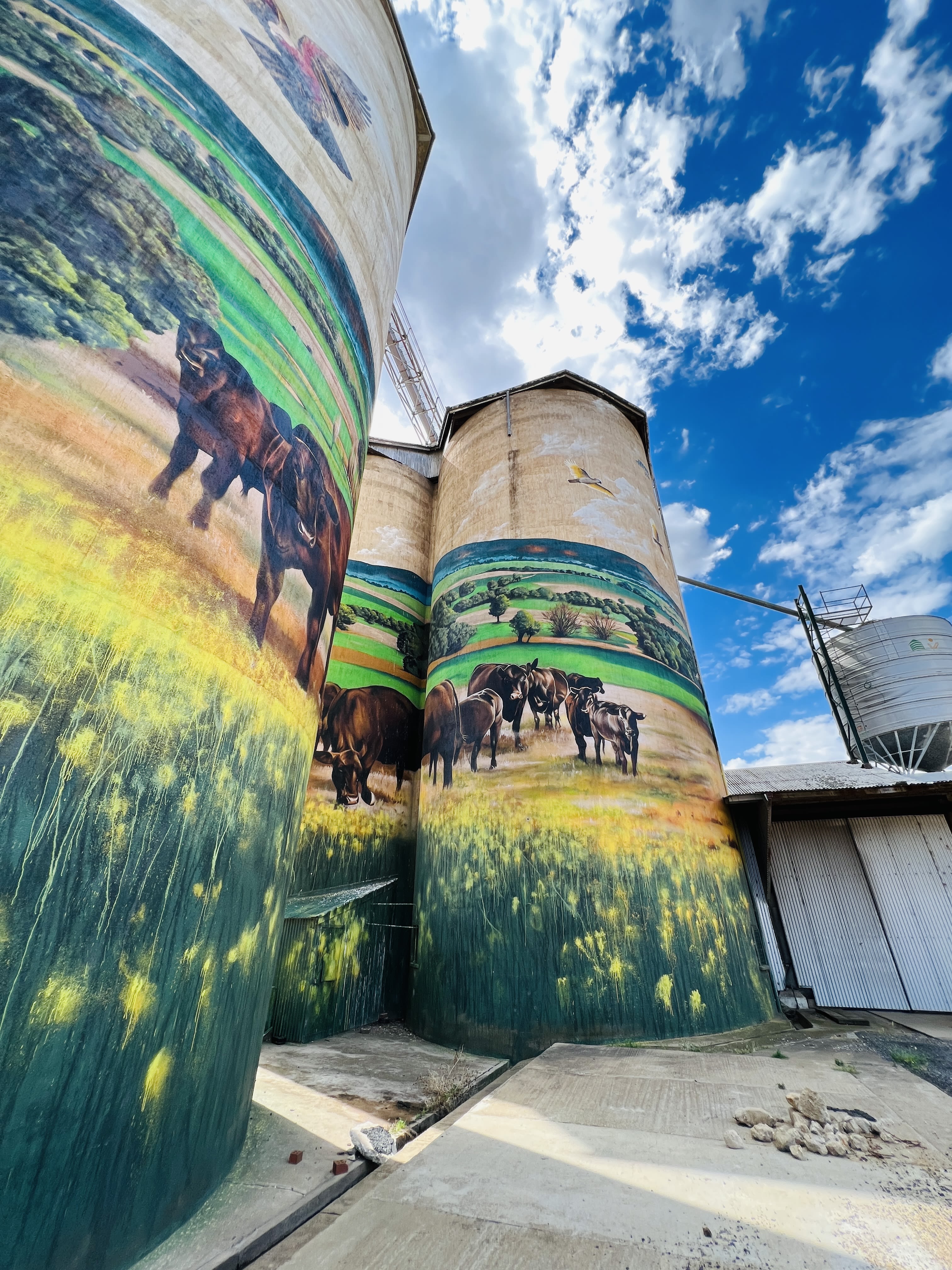
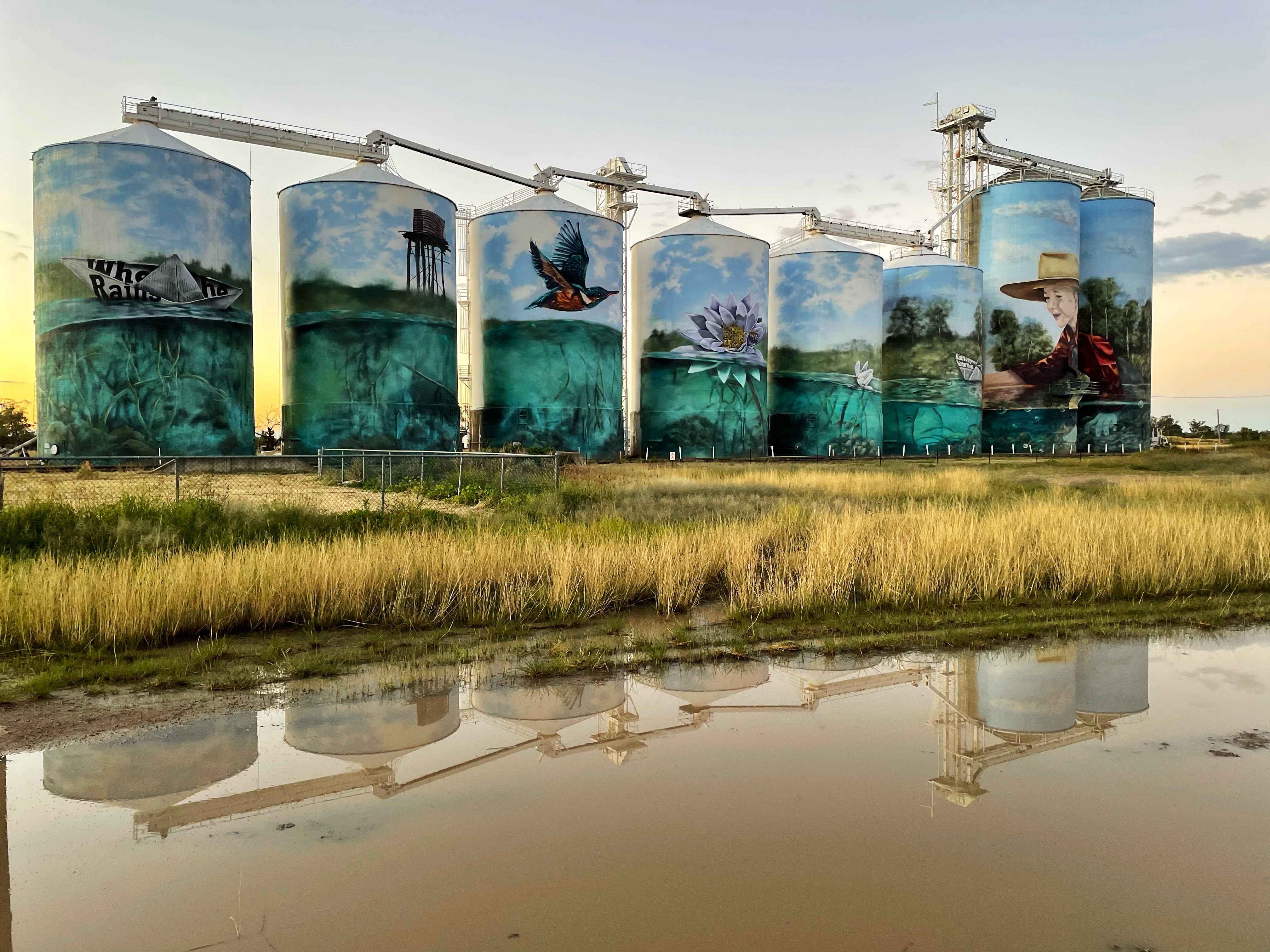
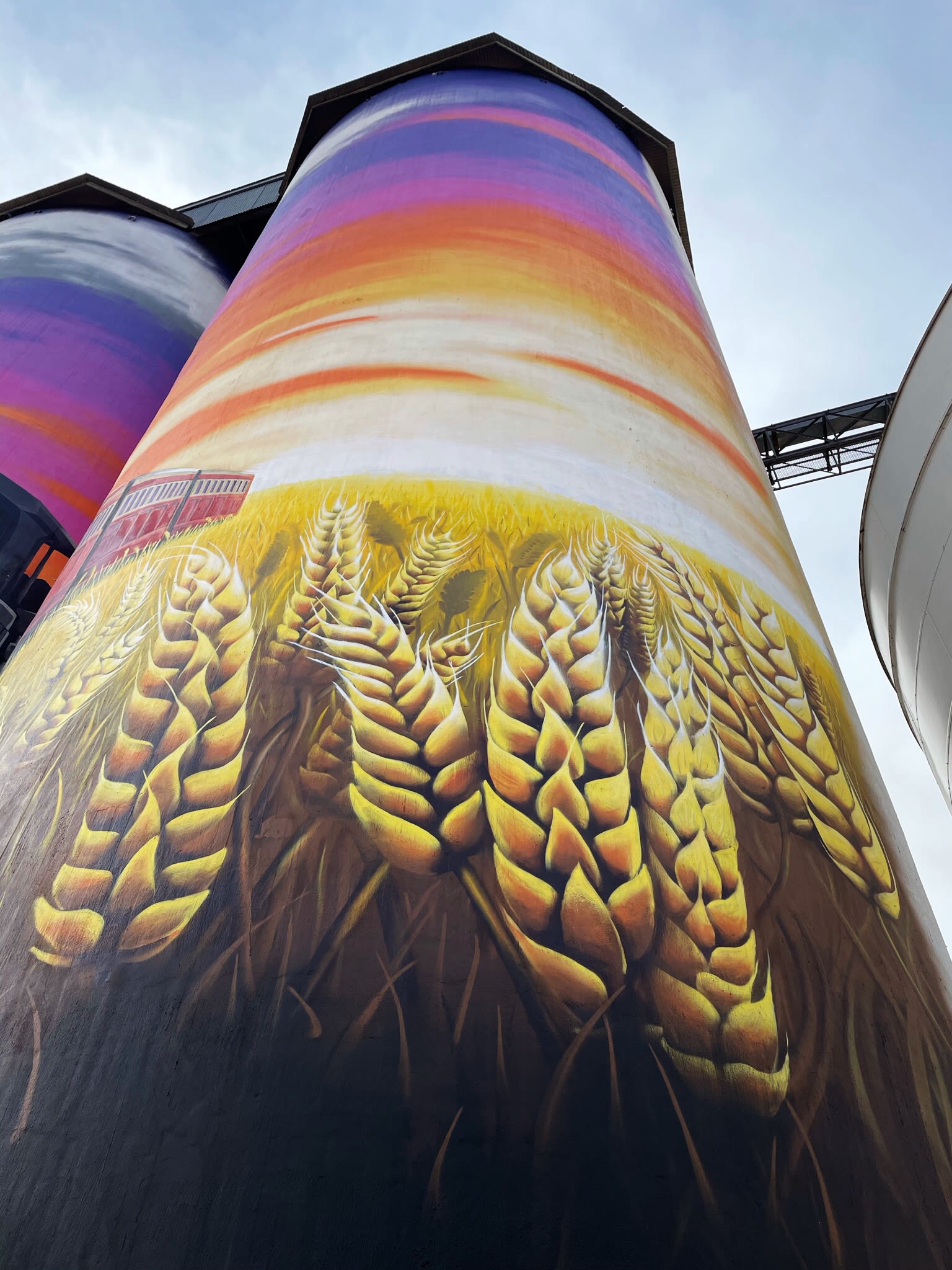
New South Wales
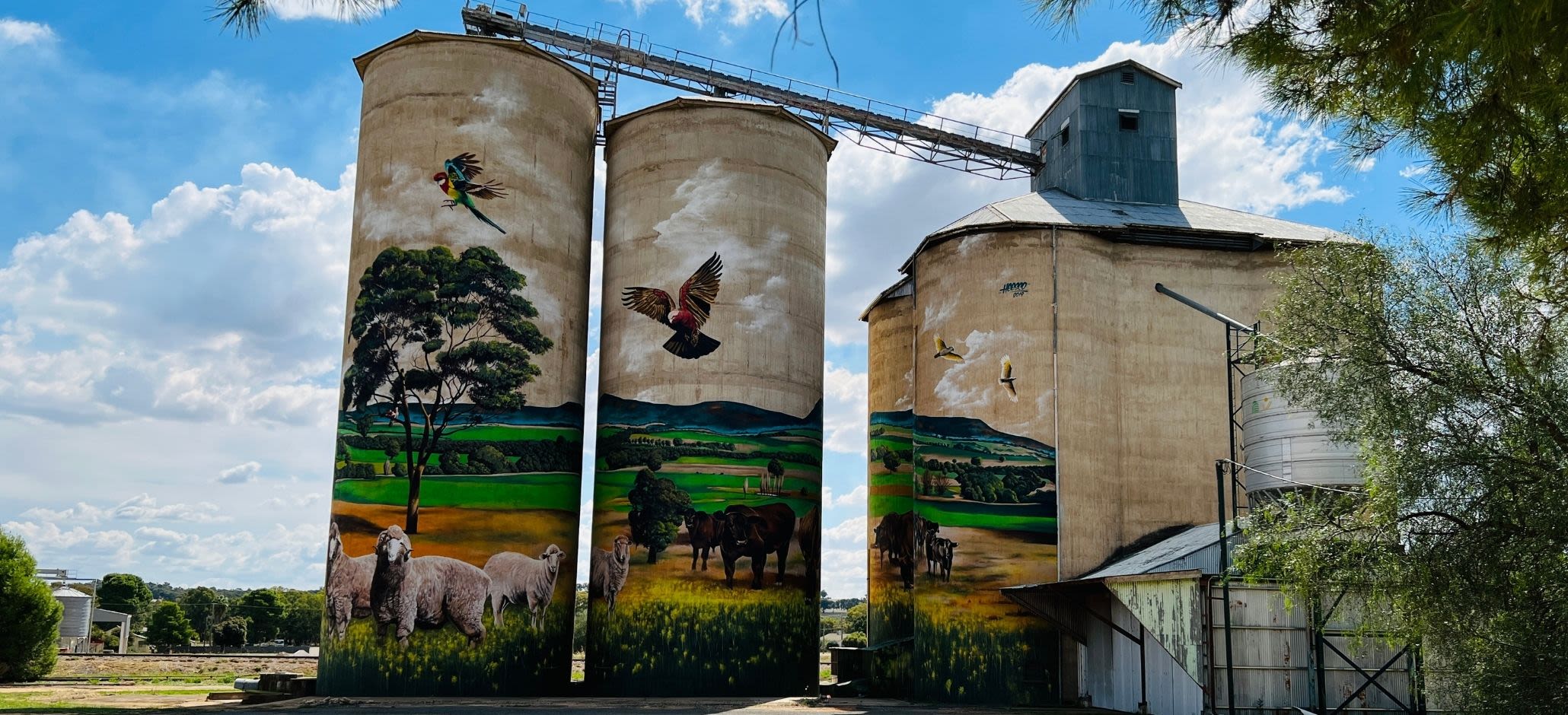
In 1916, an extraordinary amount of grain which accumulated during the war was lost due to rodents, weather, and insects across New South Wales. It prompted the government to propose the construction of 139 bulk storage wheat silos across the state and the construction commenced in 1917.
Today, some of these bulk storage wheat silos provide NSW with some interesting outdoor art, with 8 completed silos thus far.
Stretching from just outside of Canberra in the Harden-Murrumburrah region to west of Tamworth it is definitely a road trip in itself. Totalling 1,405km there would be plenty to see along the road and incredible places to stay and eat for a new experience.
From Canberra you would start at the Harden-Murrumburrah silo, then drive to the first silo to be painted in New South Wales in July 2017, Weethalle, which showcases a grain farmer, a shearer, and a small flock of sheep perched high on a balcony keeping a watchful eye over the land, a tribute to the rich agricultural heritage of the small community.
Then drive to the silo in Grenfell which used 180 litres of paint and 800 spray cans.
After that you would make your way to Portland, Merriwa, Barraba, Gunnedah and lastly Dunedoo where the first stage began in June 2020.
Each silo is painted with an image depicting a story of the town surrounding it, grounding its story and history further.
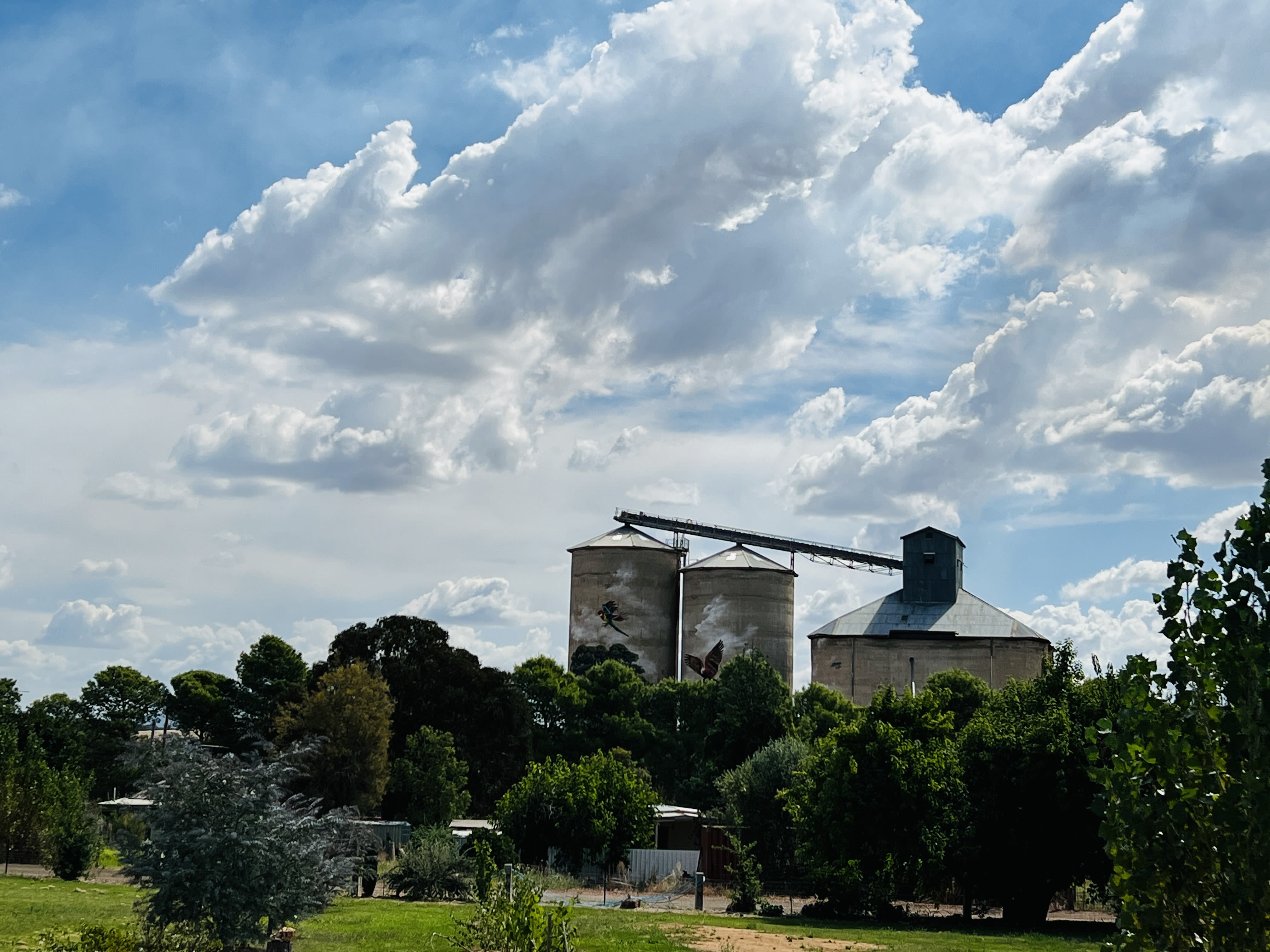
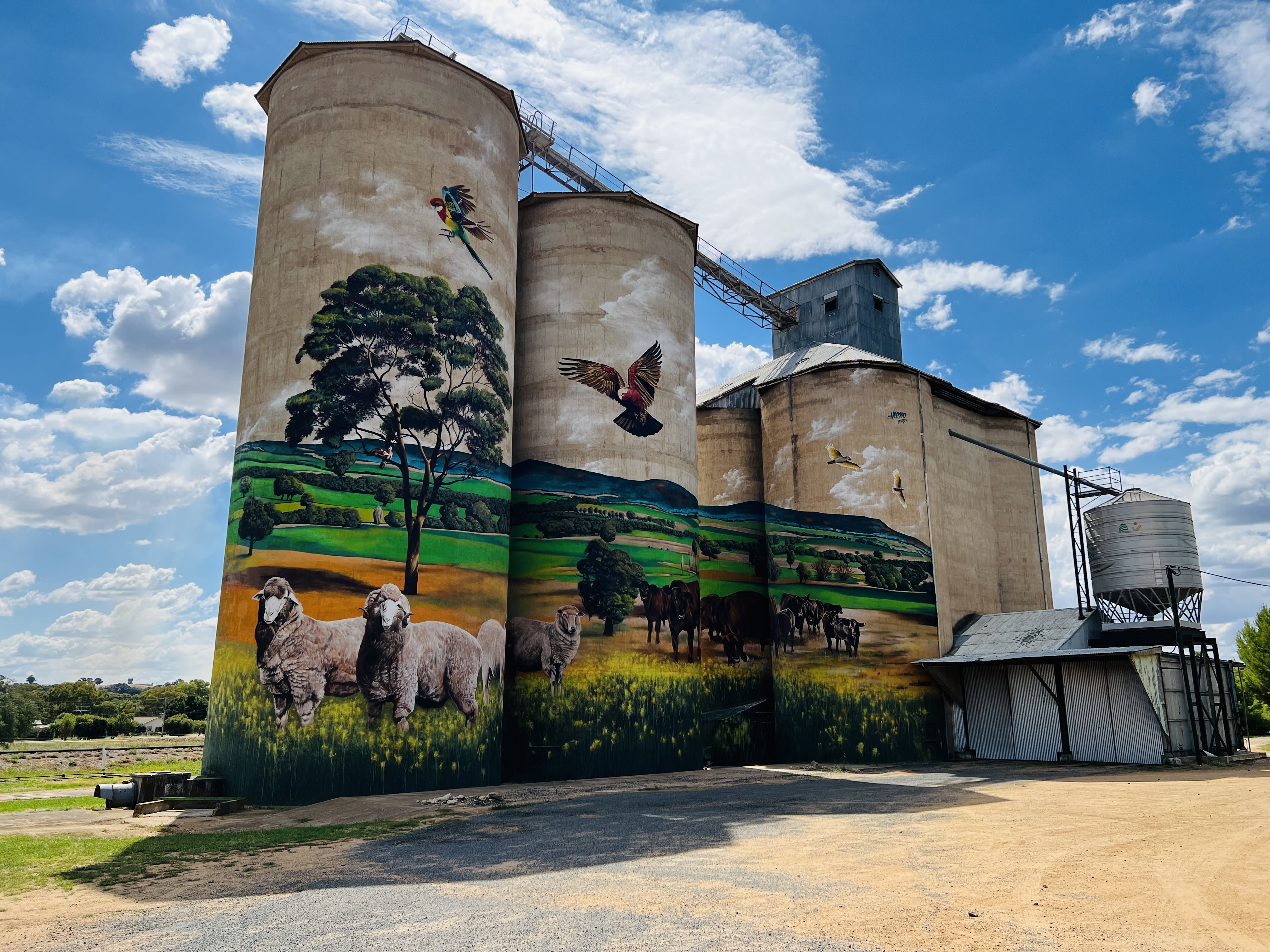
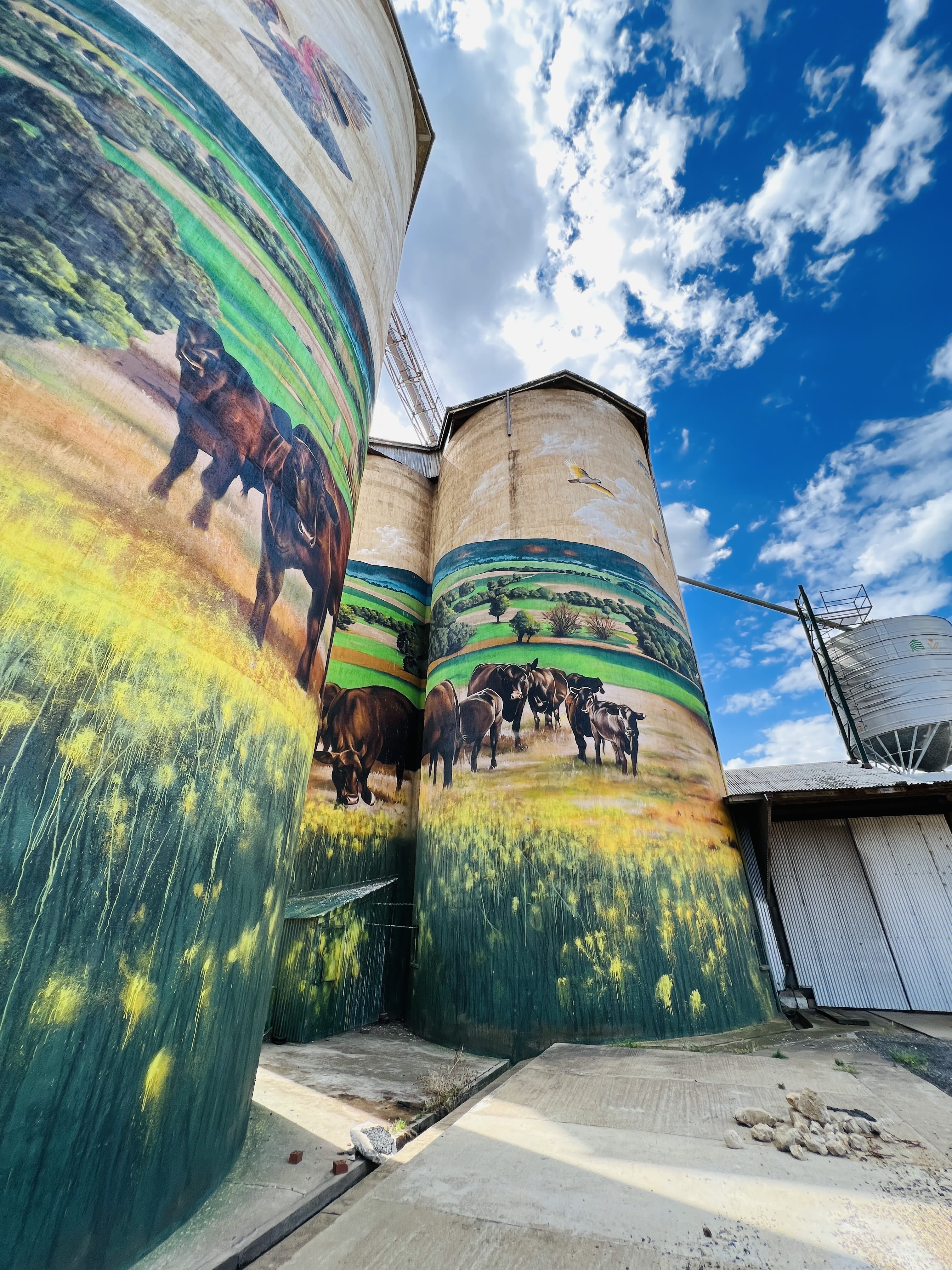
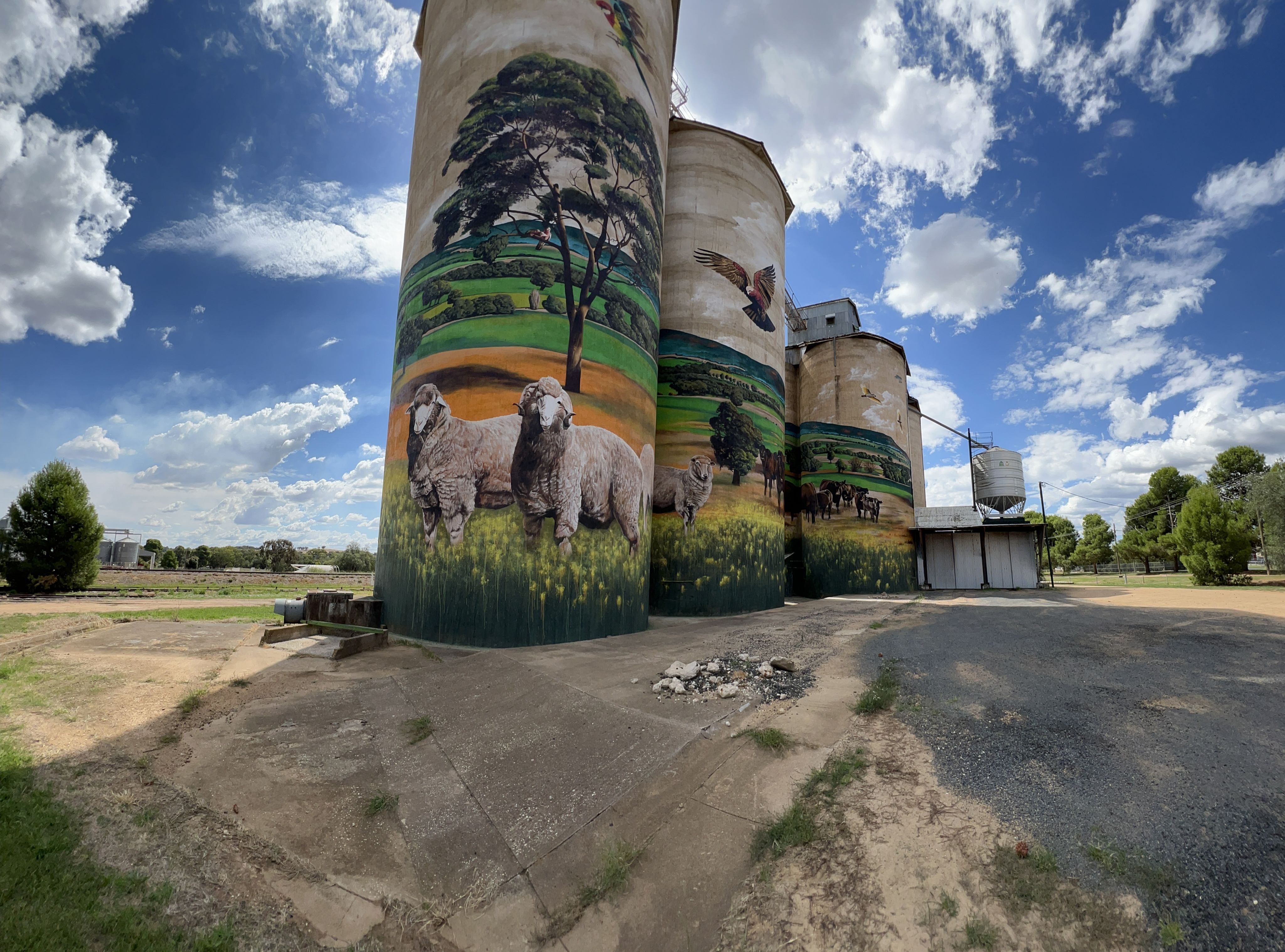
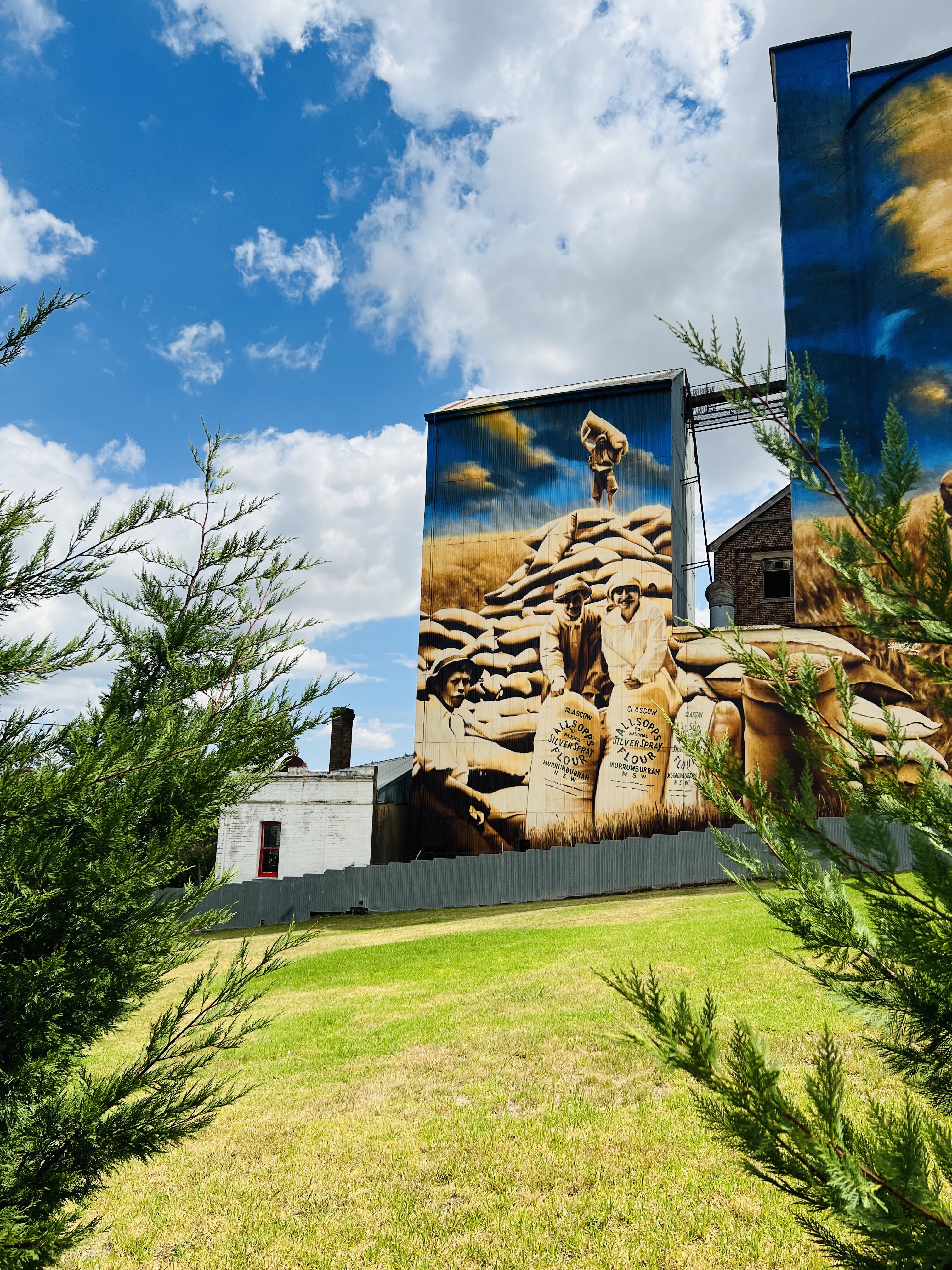
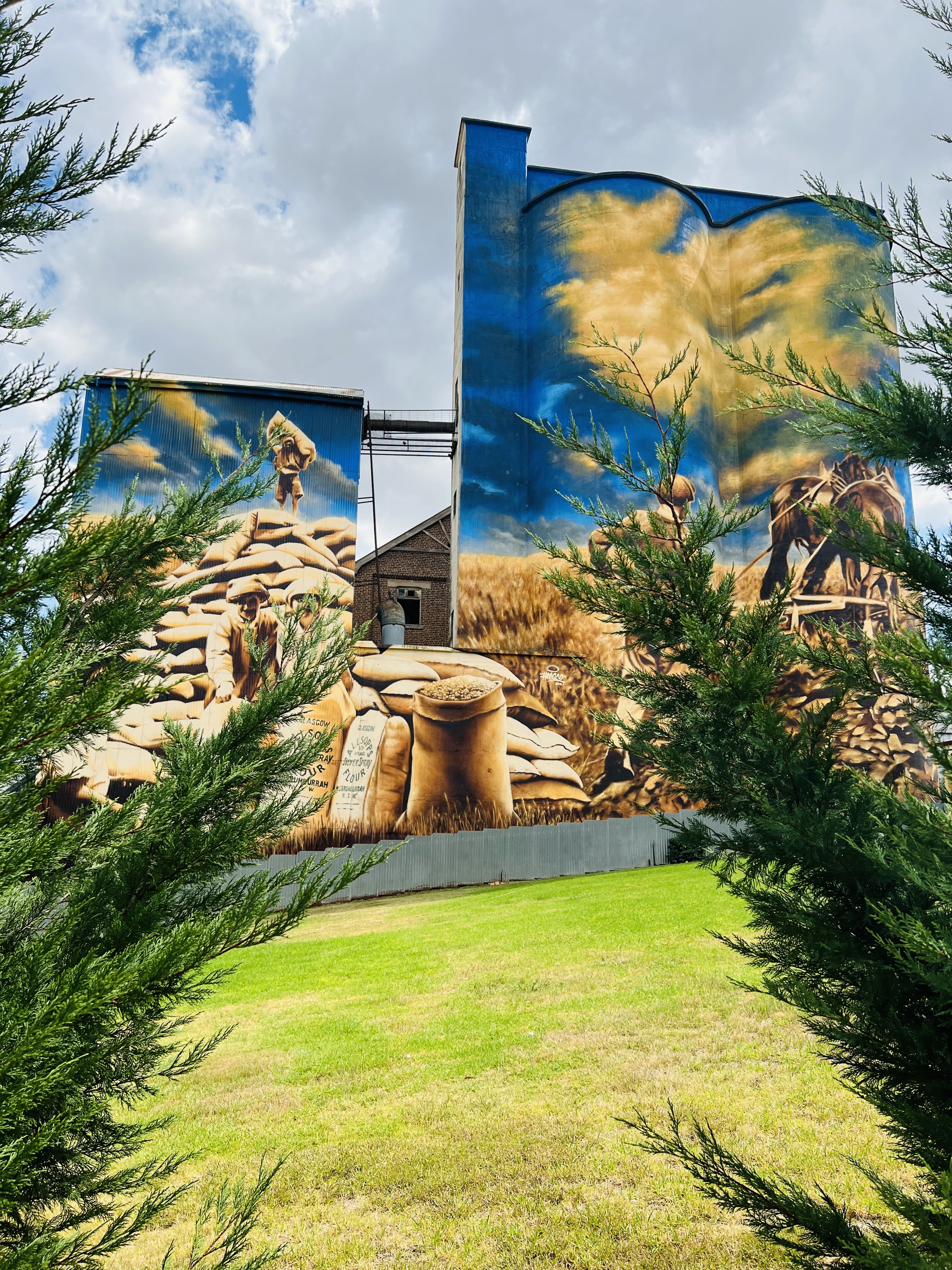
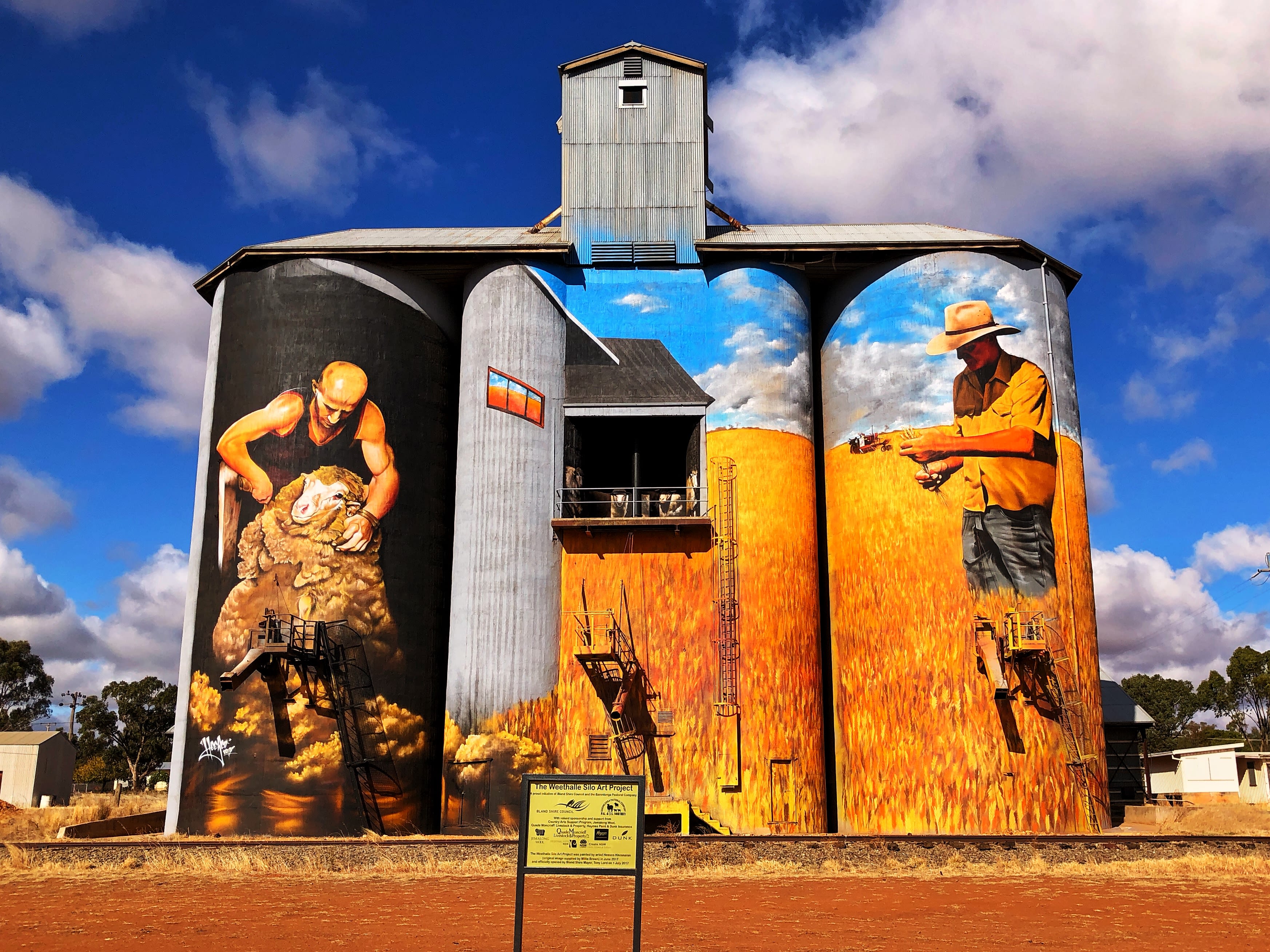
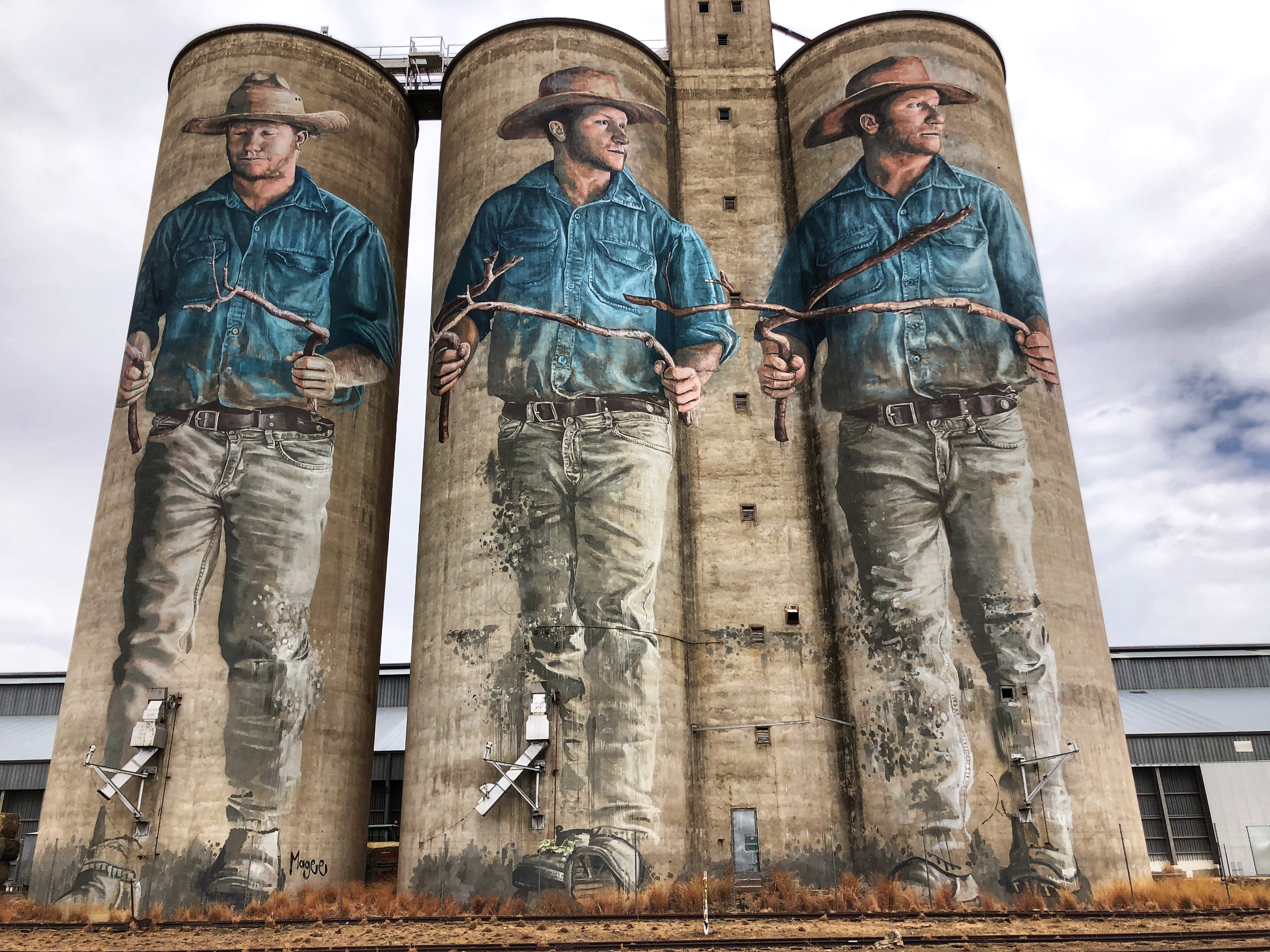
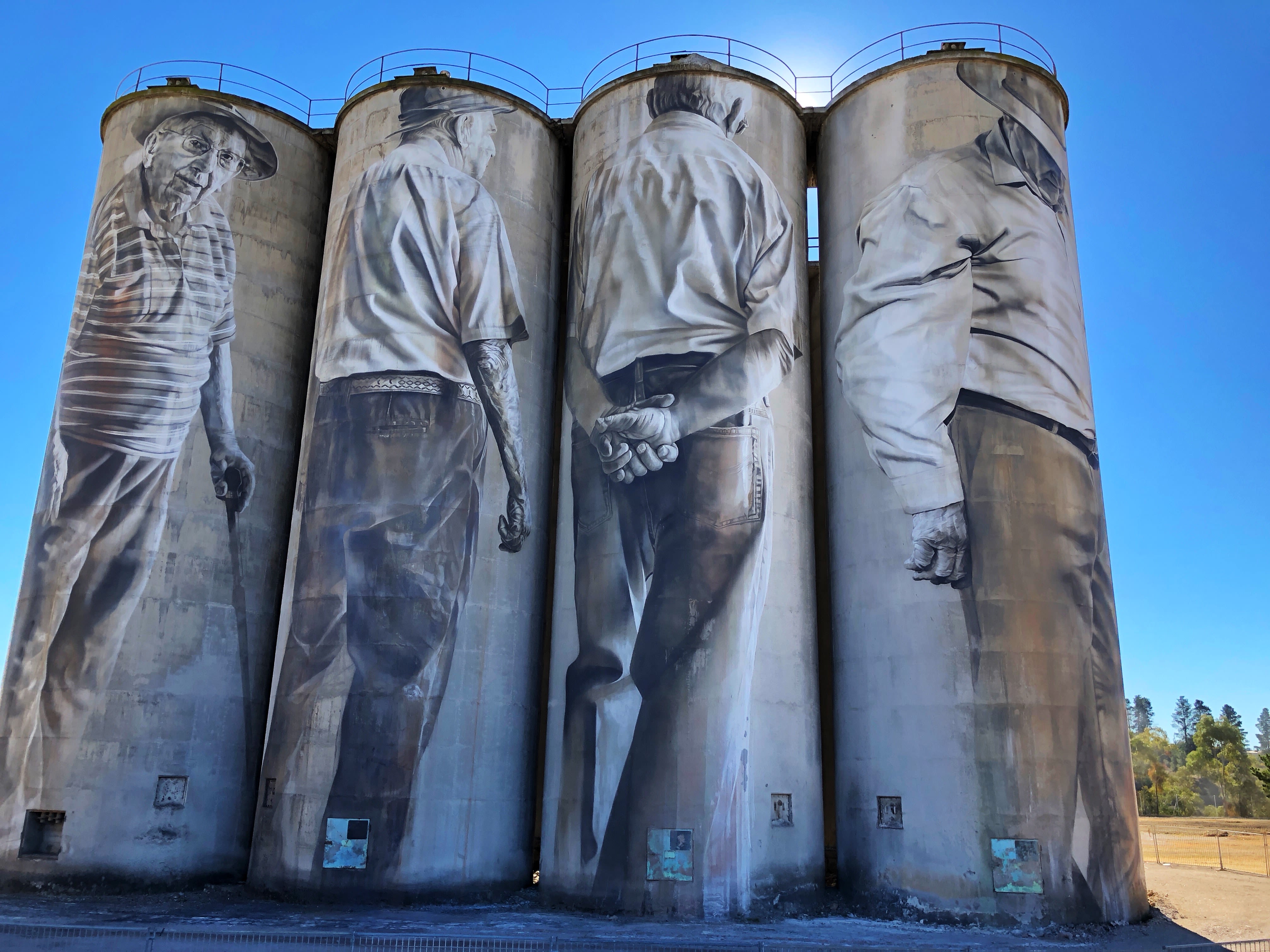
Queensland
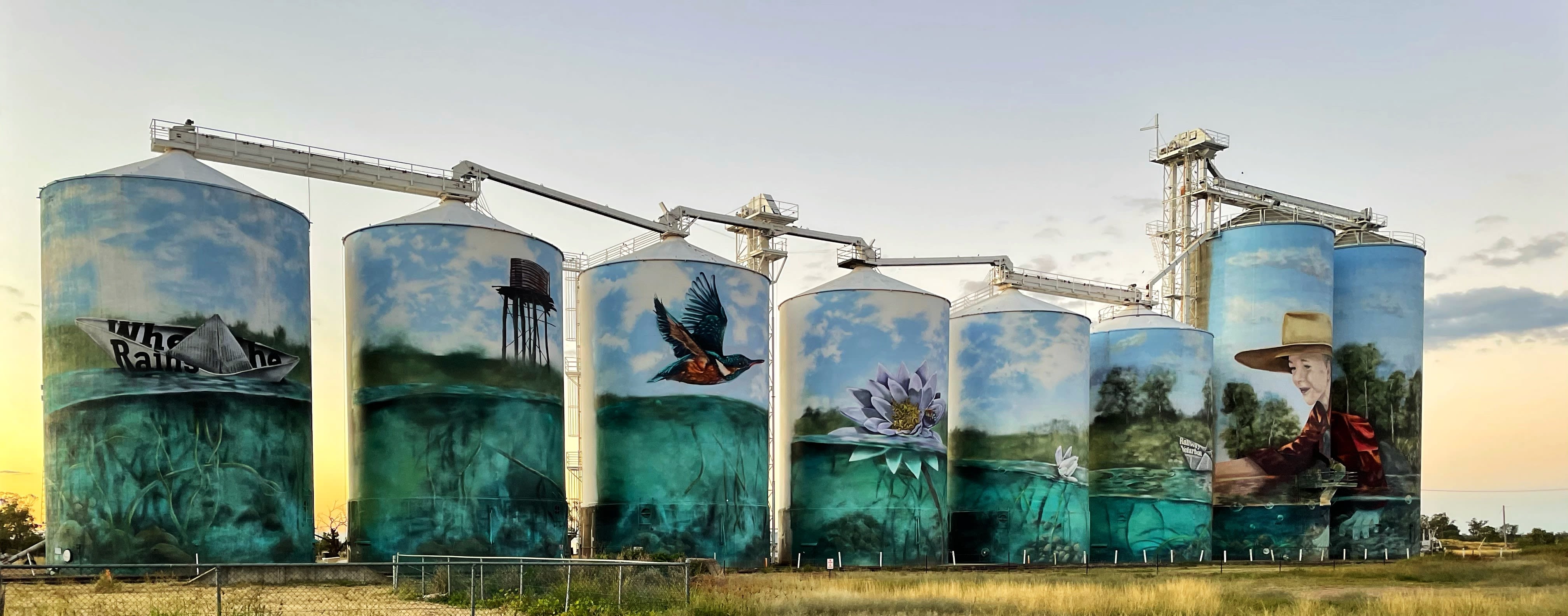
Queensland only has 3 silos painted currently, but they are definitely not to be missed.
Travelling from NSW over the border you would start at the GrainCorp Silos in Thallon which was the first to be painted in the state, these are fully operational and the local caravan park backs onto the silos which gives you a great opportunity to see and photograph the silos at different times of the day.
Then visit the silos in Yelarbon, the only set thus far in Australia to have a unique shape of two tall and six shorter silos all in a row.
Lastly the Three Moon Silo Art which depicts the legend of the Three Moon.
The trail of the 3 silos totals 778km, an amazing opportunity to visit rural Queensland to see a different side of the Sunshine State.
Three Moon Silo Art being painted by artists Drapl and The Zookeeper

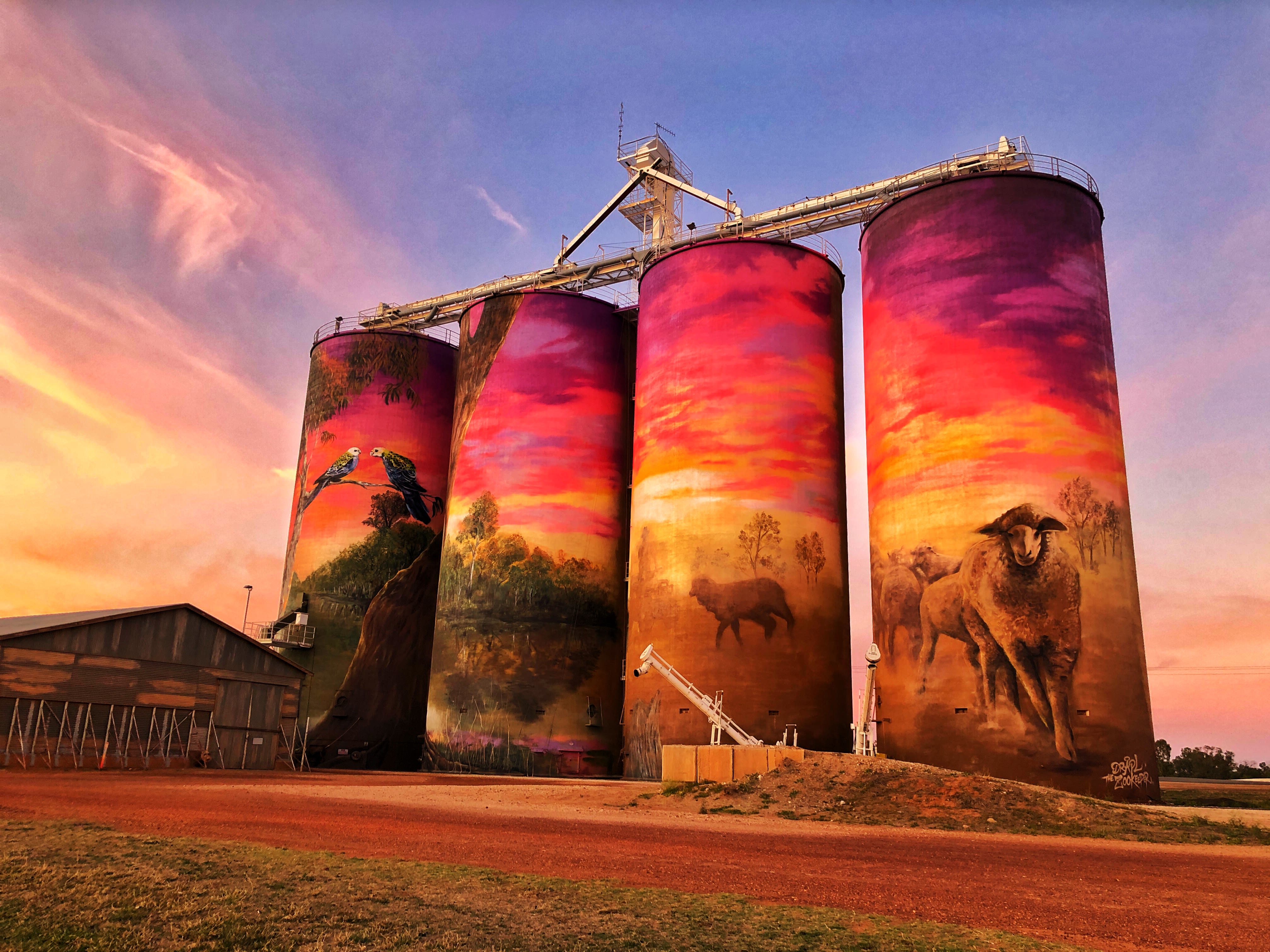
South Australia
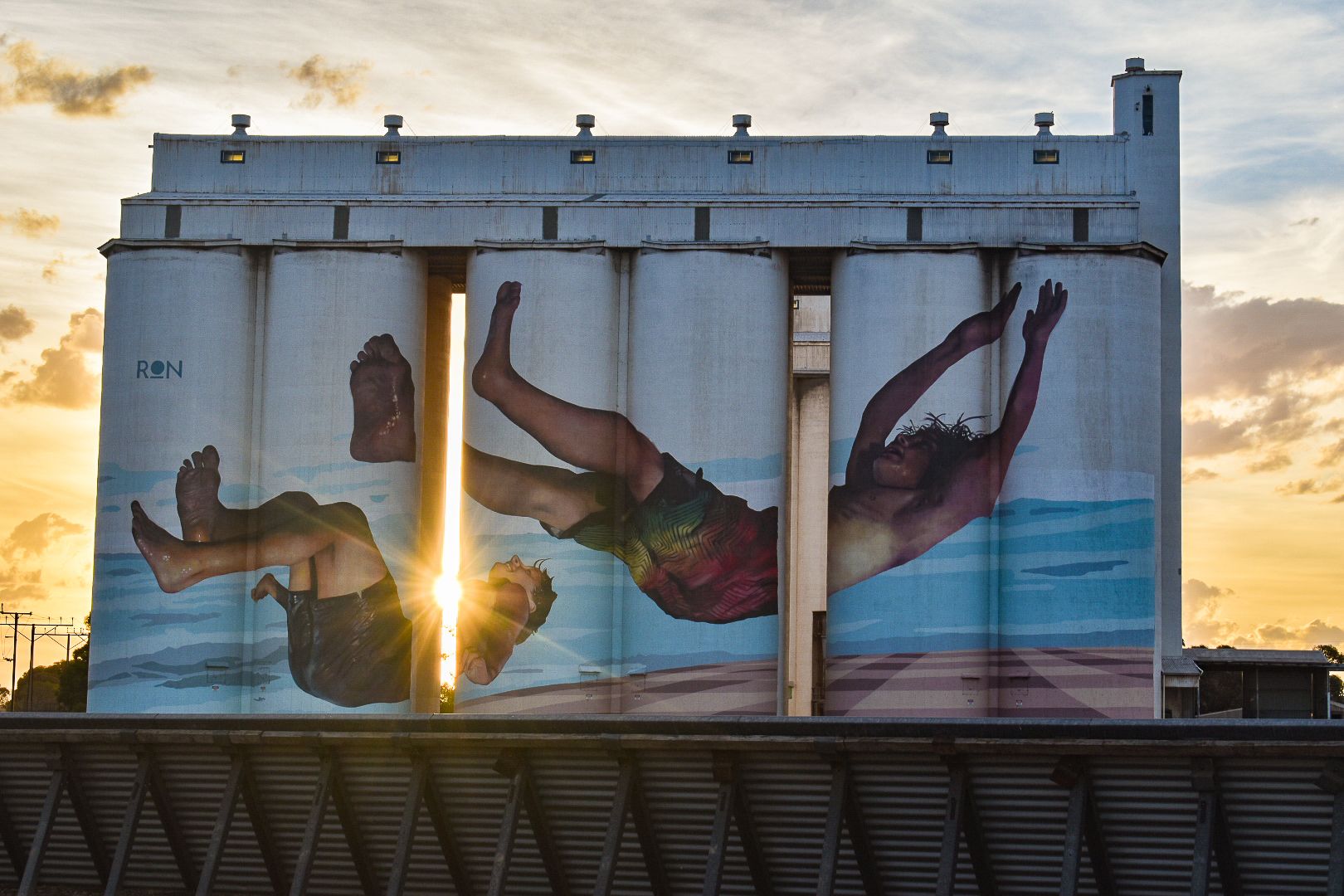
South Australia has the 2nd highest number of painted silos, with 14 completed art pieces so far. In total it would be 1,874 kilometres if driven from one end to the other, so why not make a holiday out of it and stop along the way to see what beautiful rural South Australia has to offer.
It really depends on where you are travelling from and the route you would like to do, but say you start from the Victorian border side closest to the Great Ocean Road, your first stop would be the Coonalpyn Silo Art which is the first silo painted in South Australia and was completed in March 2017.
The 30-metre high and still operational grain silos were painted with a simple aim - rural renewal through the arts. The completed work incorporates the north, east and south faces of the silos, encouraging interactive viewing opportunities and promoting visitors to walk around the silo to photograph different viewing points.
From there you would head to Karoonda where the silos are a magnificent tribute to the heritage of farming in the town and by night the other side lights up with a cinema show. A great incentive to get tourists to stay the night in this delightful little town.
It’s also the first of its kind in the country to offer Silo Art by day and Cinema Art by night.
Then the Kingscote Silo Art, which is located on Kangaroo Island. You will need to take the Sealink Kangaroo Island ferry to get to this open air artwork. It showcases an incredible art piece portraying the native animals of Kangaroo Island.
After that off to Owen, then Eudunda to view The Storytime Silos, then Waikerie which is one of three silos painted on both sides (Ravensthrope WA and Dunedoo NSW are the others), and the last stop of the day or first leg of the trip would be Paringa.
After an incredible start to the South Australian silo art trail you’ve earned a glass of wine and a night over to rejuvenate and explore the local hangouts before seeing more incredible art pieces.
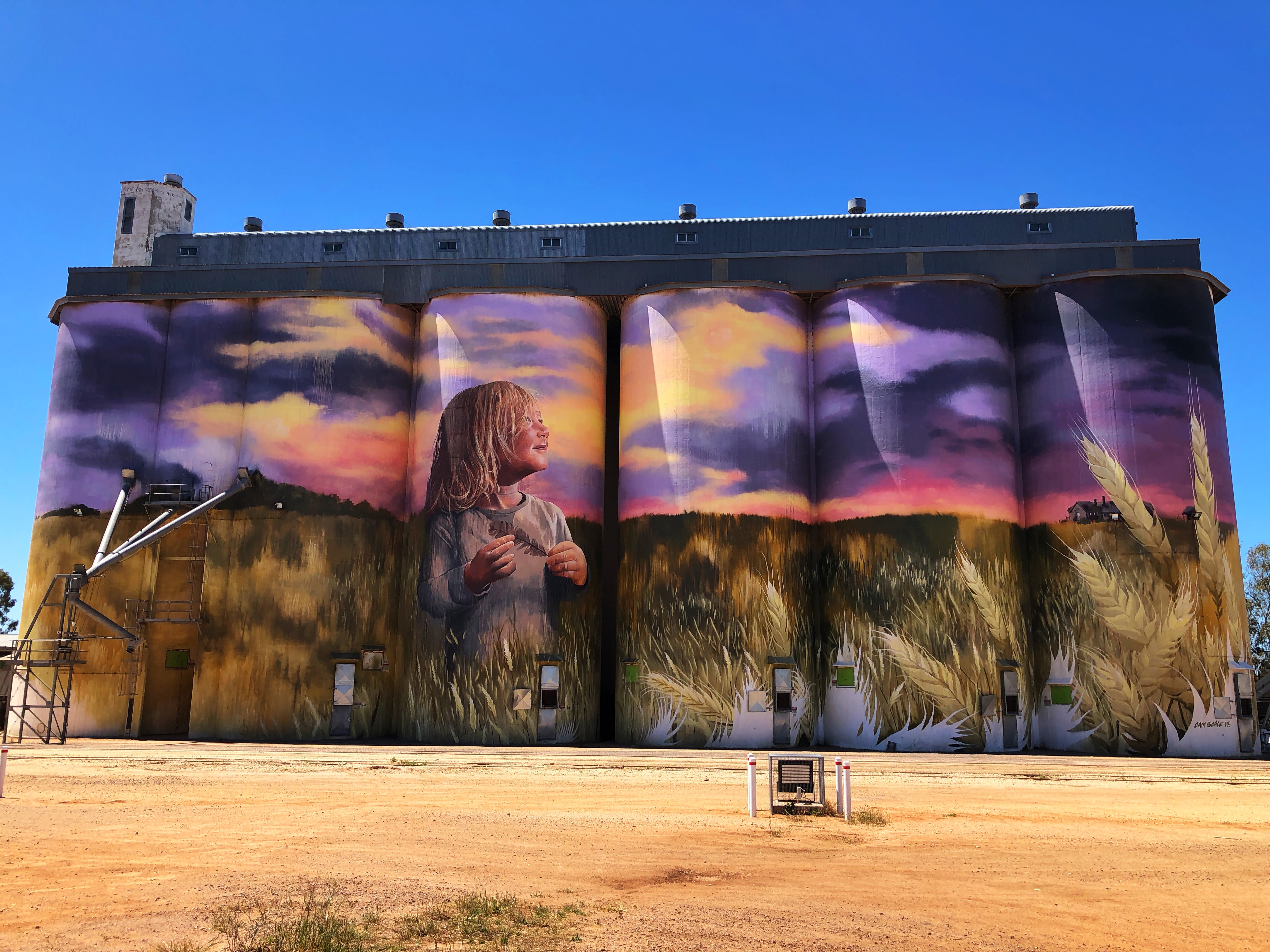
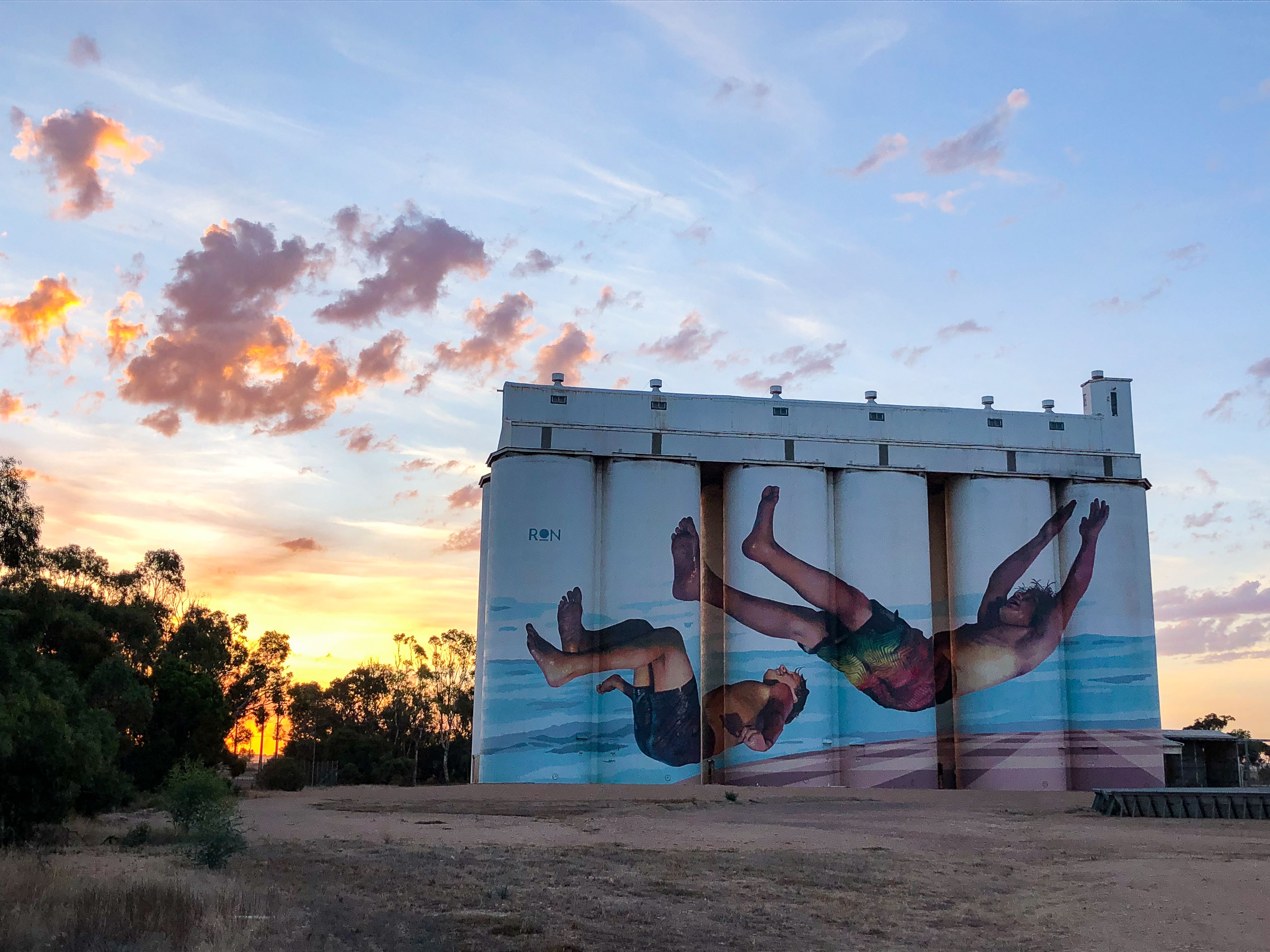
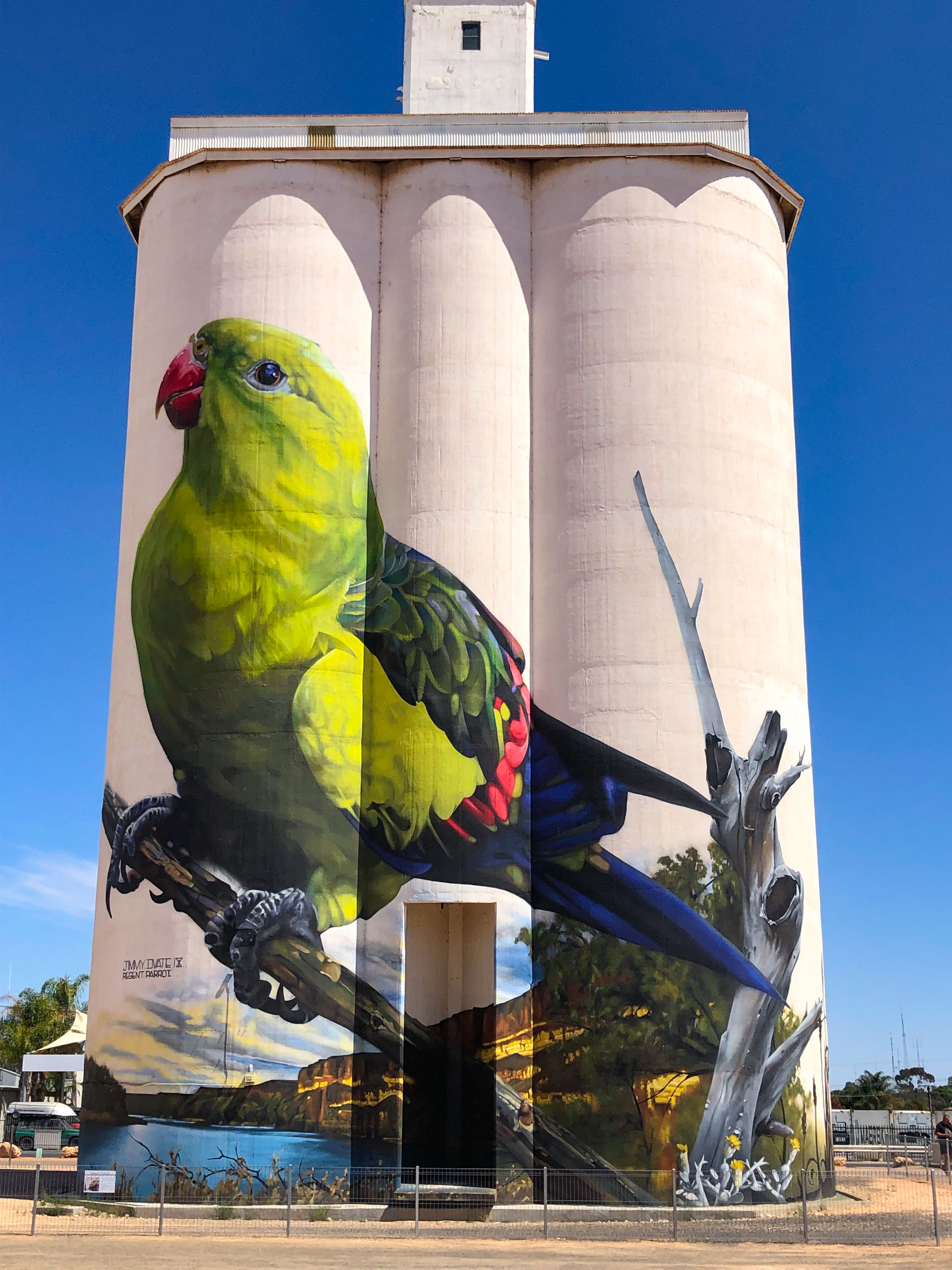
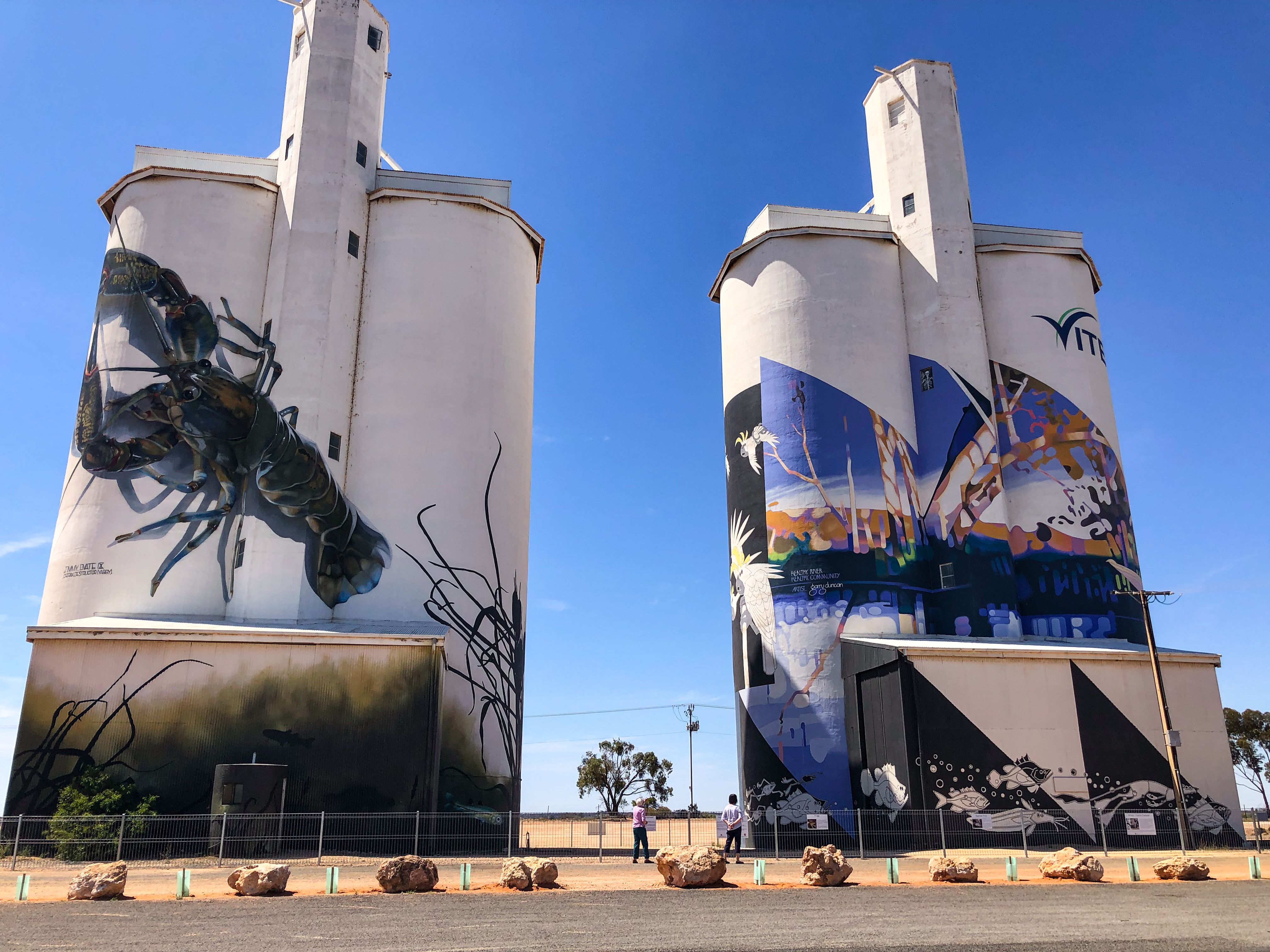
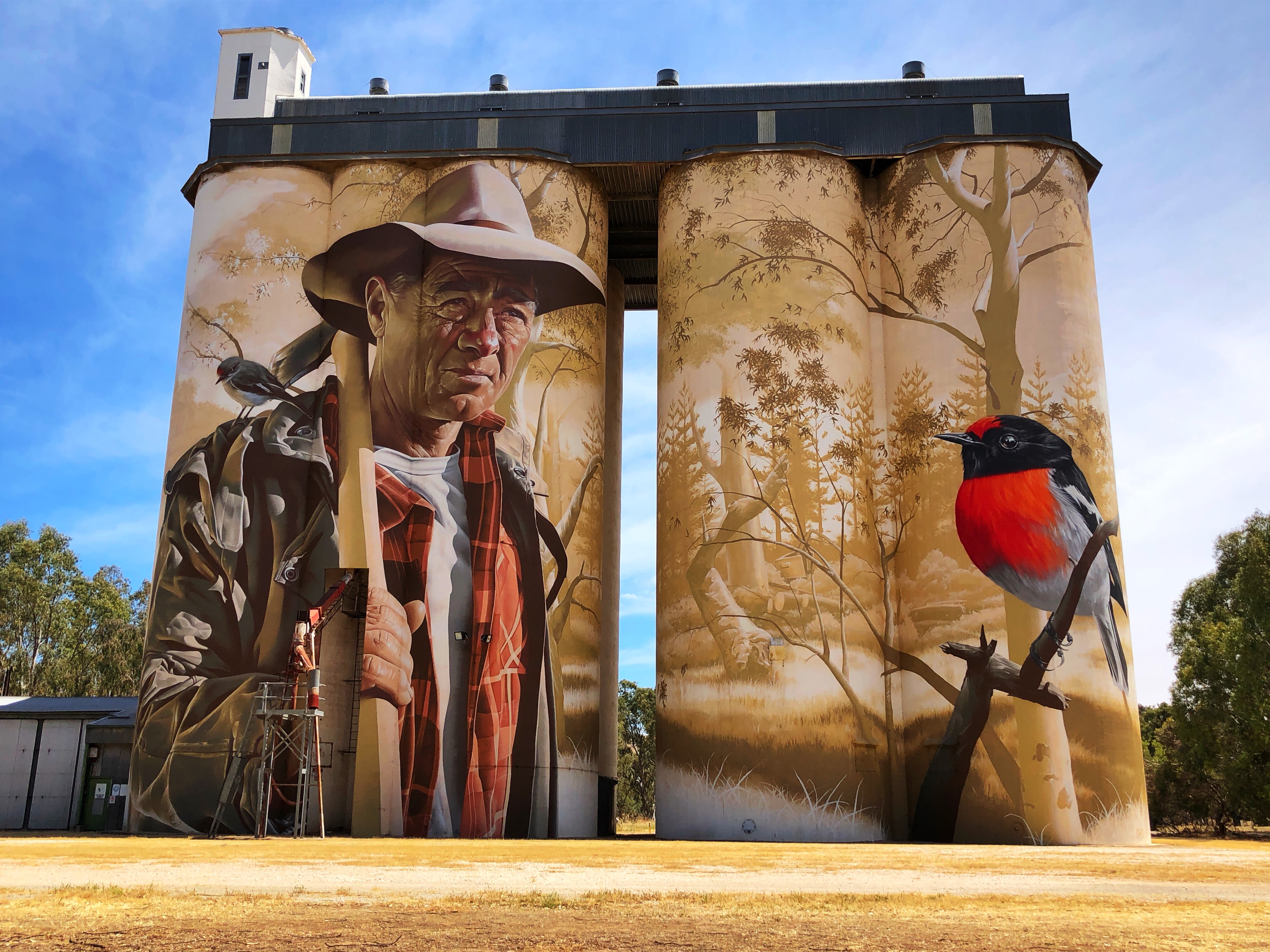
The second part of the journey would take you from Paringa to Farrell Flat – a town you would miss if you’d blink with a population of less than 250 people. The art piece depicts the last train to pass through this historic town.
After that you would head to Wallaroo, where the silos aren’t actually painted, but light up every night with a light show, with a different theme for each one.
Then off to Wirrabara, Quorn which is also a Silo Light Show, Kimba, Cowell and lastly the silo art in Tumby Bay.
With so much to see and experience in South Australia, it is worthwhile incorporating the silo art they have into your next holiday.
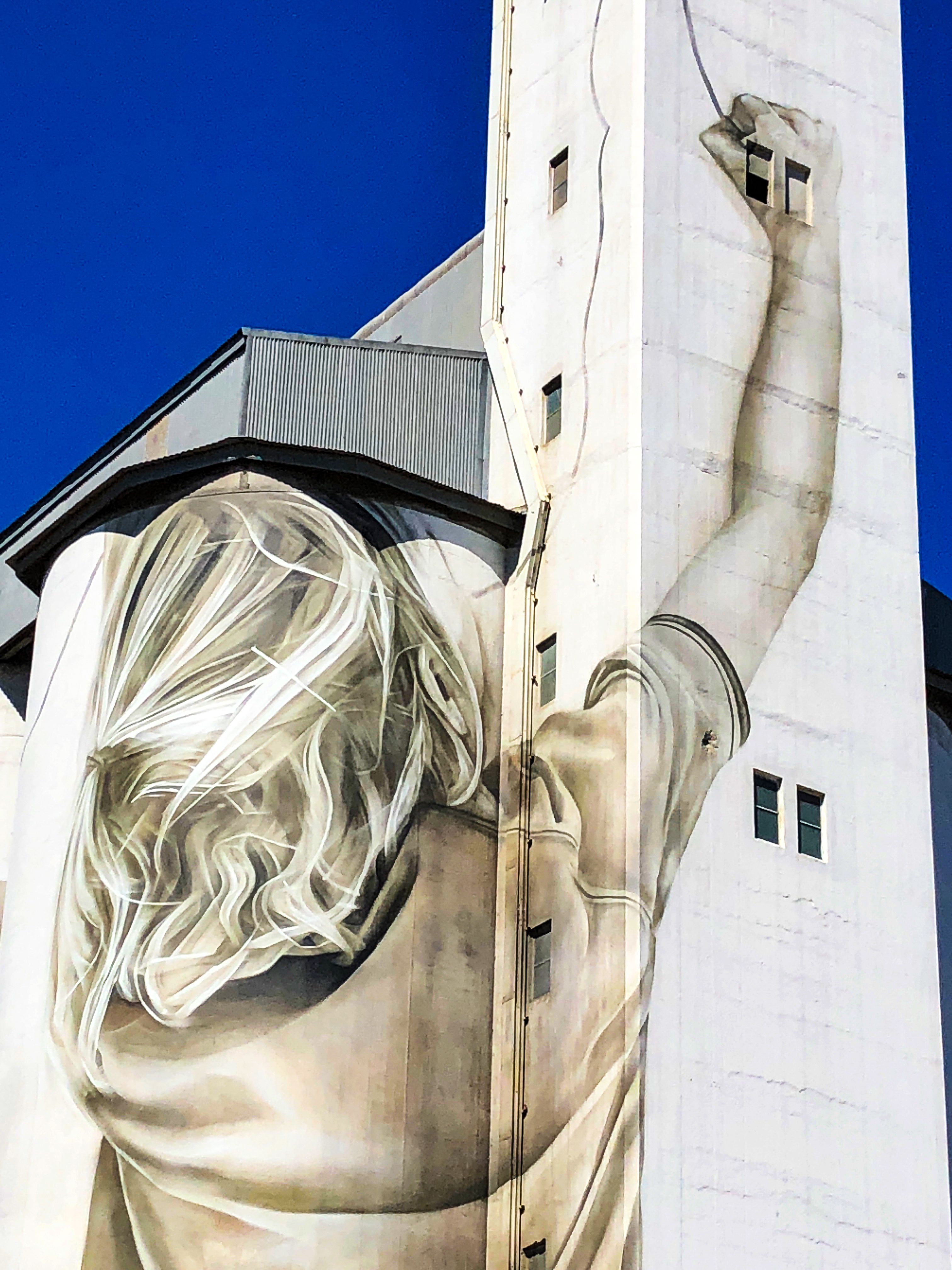

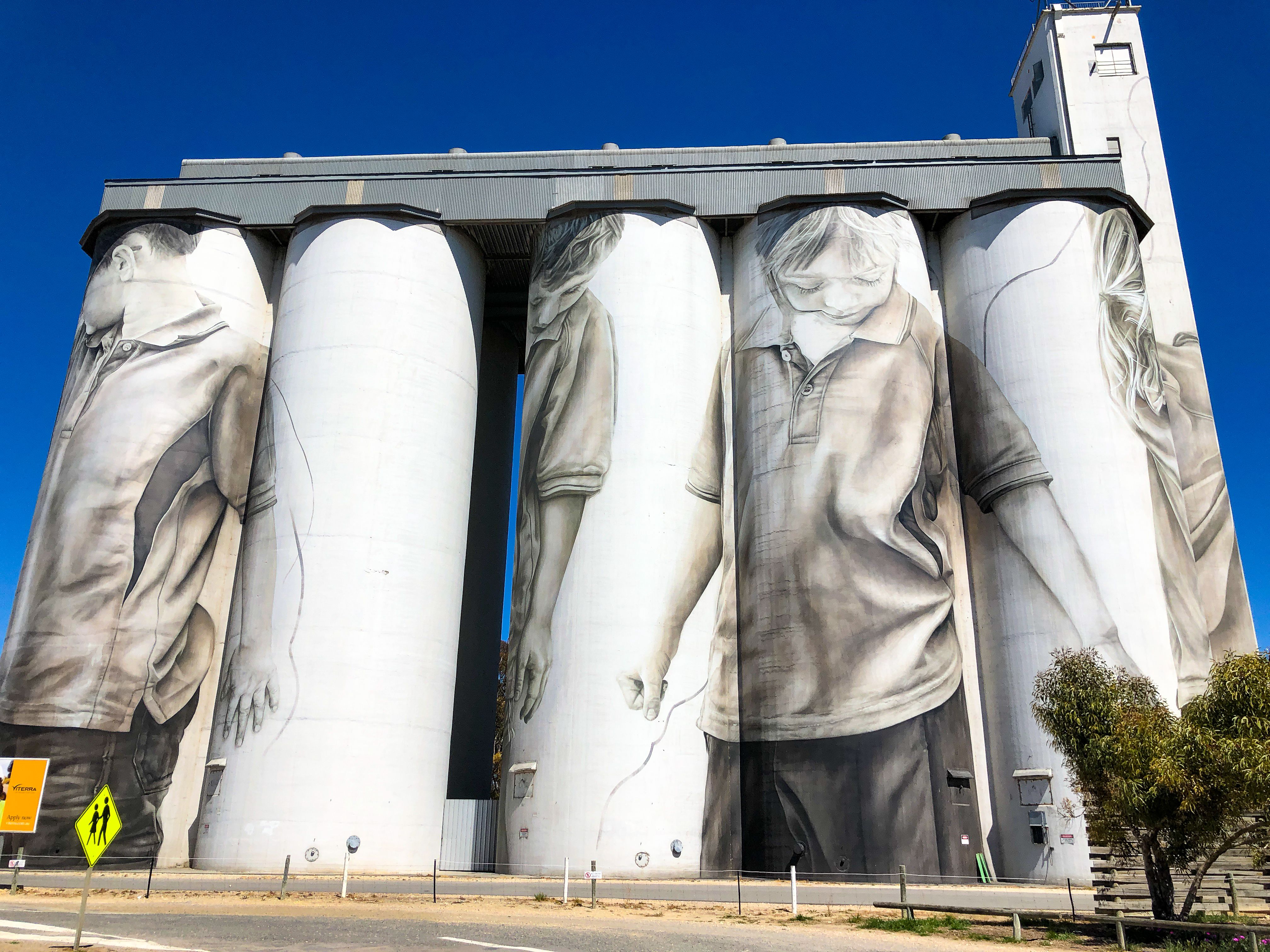
Victoria
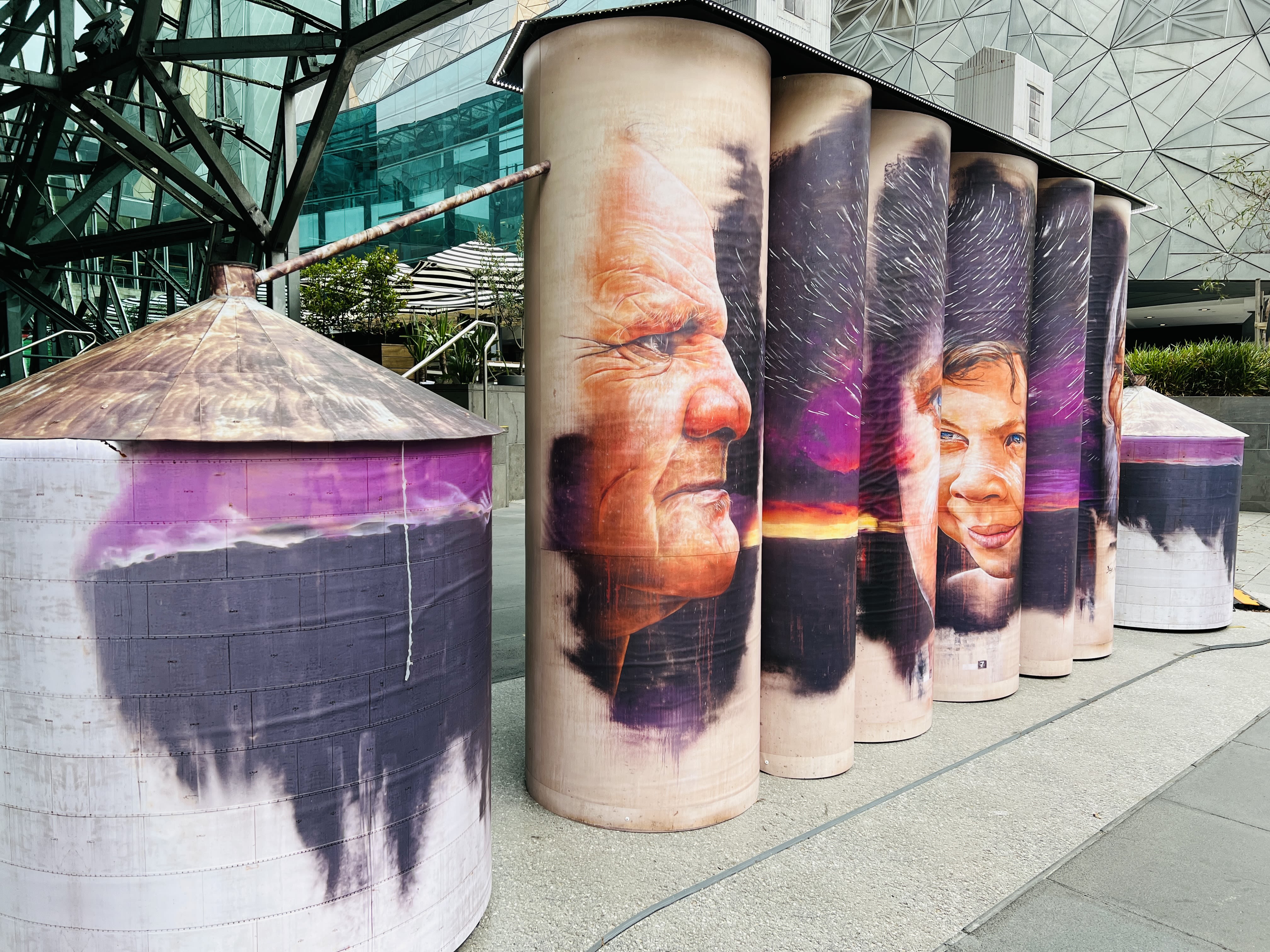
There are currently 22 completed silos in Victoria, which makes this the state with the most silo art.
There used to be 23, however the Fyansford Silos (14th silo) were demolished in 2020 as they were deemed unsuitable for restoration and potentially unsafe.
Stretching over 1,300km in total and winding through the state, the Victorian silo art trail can be divided into three parts to enjoy all the sights and experiences properly along the way.
Part 1
This will be the longest part of the trip.
The first two stops were both completed in October 2020, Kaniva which was completed with 400 litres of paint and then the GrainCorp Silos at Goroke which depicts native birds significant to the town and region combined with local landscapes.
Then on to Albacutya, Patchewollock, Lascelles, the 8 Mobile Silo Art of Woomelang, Sea Lake, Nullawil, The GrainCorp Silos at Rosebery and lastly, ironically, the Brim silo art which was the first to be painted in Victoria and the 2nd to be included in the Australian Silo Art Trail. The Brim mural brought the town and region new energy.
The faces included on the silo art are anonymous, but they are said to portray multi-generational farmers, both male and female, who show the resilience and strength that is required to be a country Victorian farmer.
Part 2
The second leg would start in Sheep Hills. They shine a light on the young Indigenous people of the area as well as their strong ancestral connection with the elders in their communities.
Then onto Rupanyup which marks the beginning of the 'Silo Art Trail' when arriving from the direction of Melbourne. Rupanyup was completed early 2017 and were painted by Julia Volchkova, the first female silo artist.
From there travel to St Arnaud, Avoca and the last stop in the city, Brunswick.
Part 3
From the city you would drive North from Melbourne to the silo art in Colbinabbin which was painted over eight weeks during the first stretch of COVID-19 (March/April 2020).
The art stretches over 6 silos and needs to be seen with your own eyes to be truly appreciated.
Western Australia
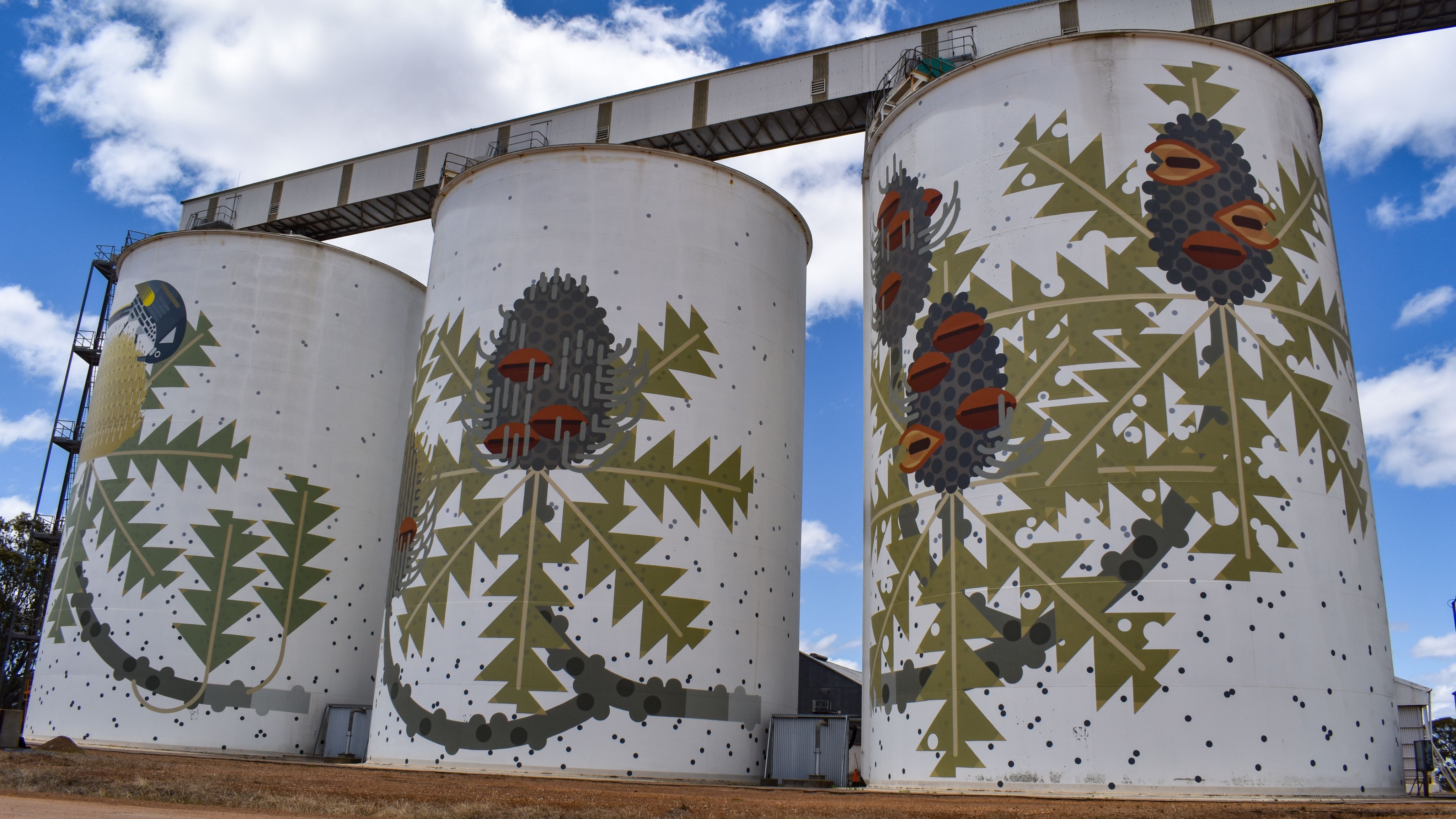
The first mural to be painted on a silo was a pilot project in March 2015 by the cultural non-profit called FORM who wanted to bring art to rural communities. They deliver and design programs that offer and build skills in creative learning, thinking as well as cultural tourism, for the improvement of Western Australia’s social, economic, and cultural wellbeing.
After being a huge success, a trail of 6 silos were planned. A three-year project was formed for The Public Silo Trail of Western Australia which brought this open-air, permanent public gallery to life linking coastal and rural towns across the southern regions of Western Australia.
Like anything in Western Australia, their silo art trail only has 6 sites, but it stretches over a whopping 1,000 kilometres.
This trail will start in Ravensthorpe where the wildflower season makes the town comes to life with a vibrancy of colour and wildlife. One of these species is the Banksia baxteri.
Each side of the three silos are painted with a stage of the flower’s life. It shows the development from flower buds to full bloom, seed pods developing, then drying out and opening. This Banksia species is a native to the state and only grows between Albany and Esperance. The animals’ part of the silo art are the New Holland Honey Eater and Honey Possum, both main pollinators of the Banksia Baxteri.
Then on to Albany on the southern tip of WA, a city well known for its beaches but more importantly the location of one of the biggest discoveries in Aquatic Zoology in 150 years, and the inspiration behind the art for this silo – the Ruby Seadragon.
It is only the third species of seadragon to ever be recorded in the world and is known for its unusual bright red colouring
After Albany, on to Pingrup, which were the last silos to be painted in WA, Newdegate and the Merredin Silo Art which is painted on the largest grain storage bins in the southern hemisphere being 59 meters high and 610 meters long.
The last stop of this incredible journey would ironically be the first ever painted silo in Australia in Northam WA. Sitting on the banks of the Avon River, Northam is a heritage listed town and these silos are fully operational and one of the busiest in Western Australia.
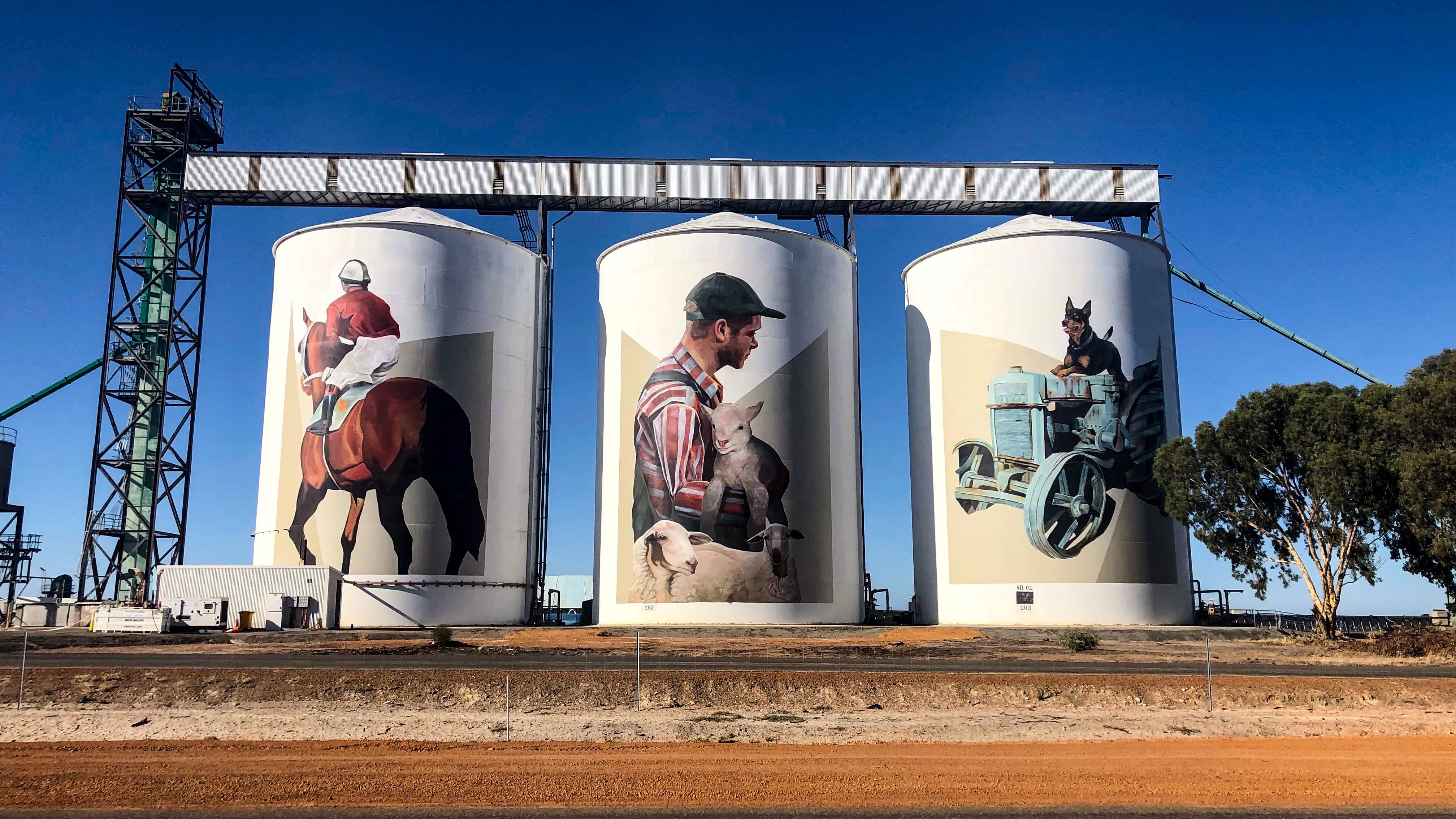
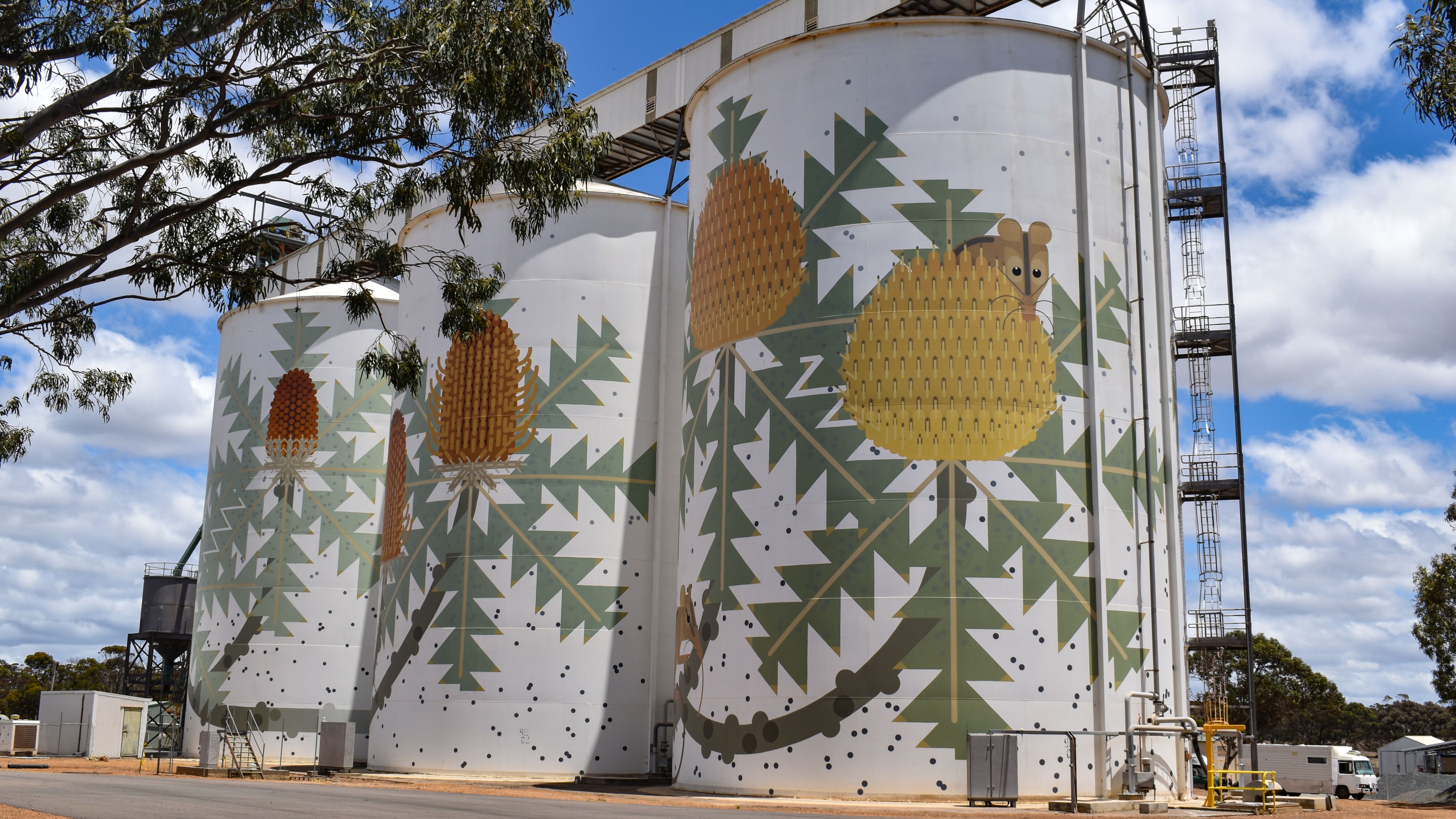
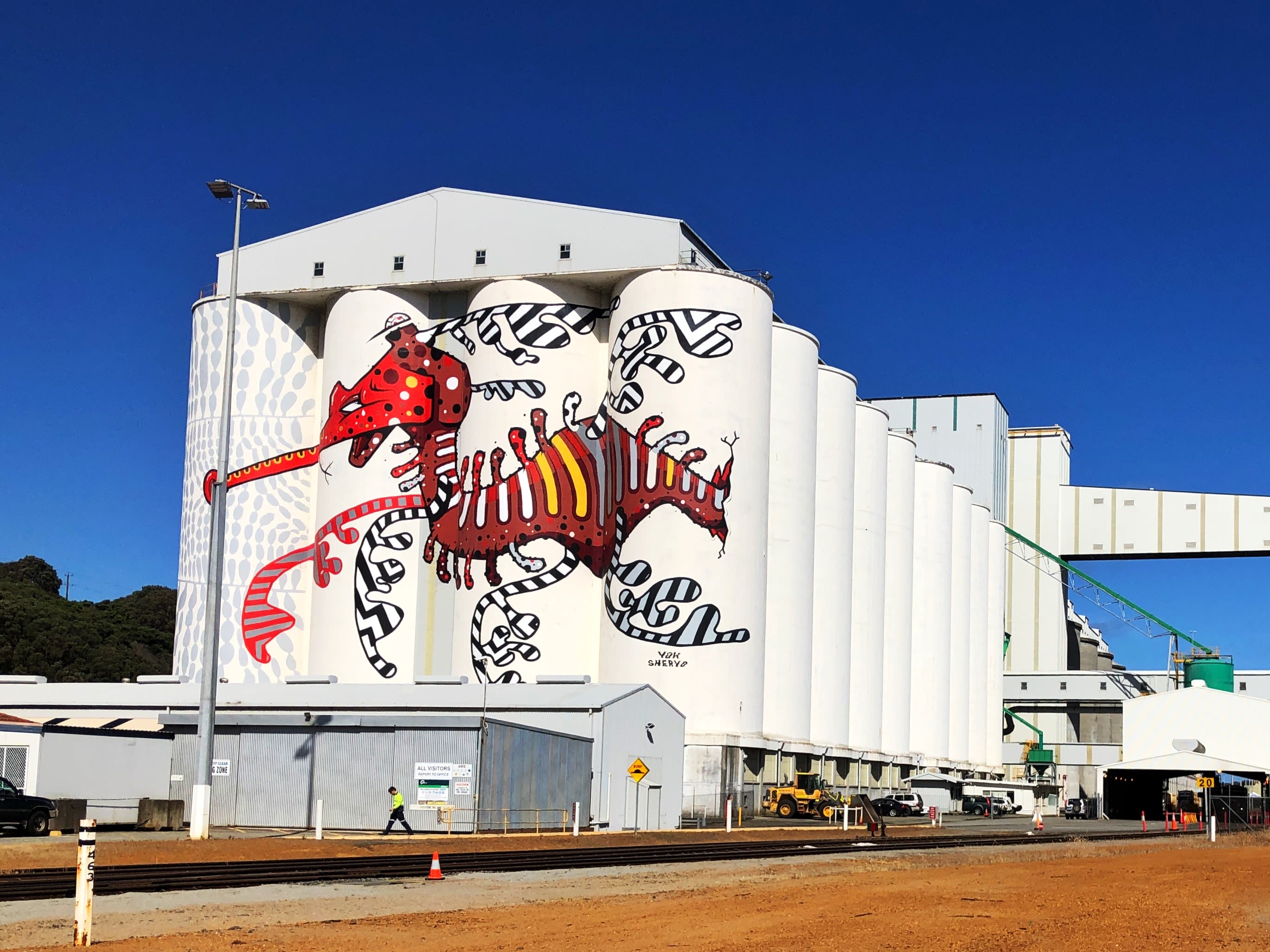
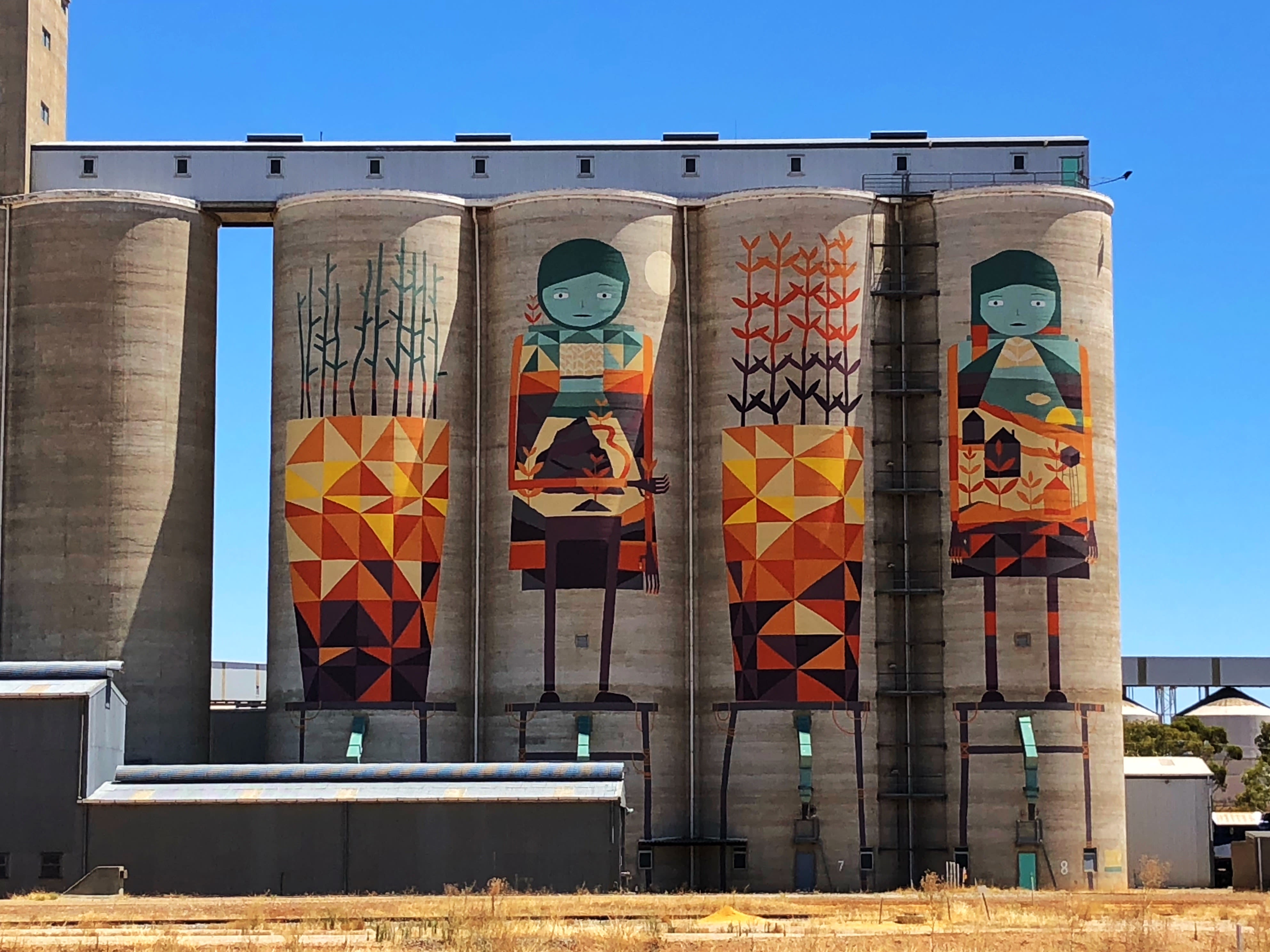
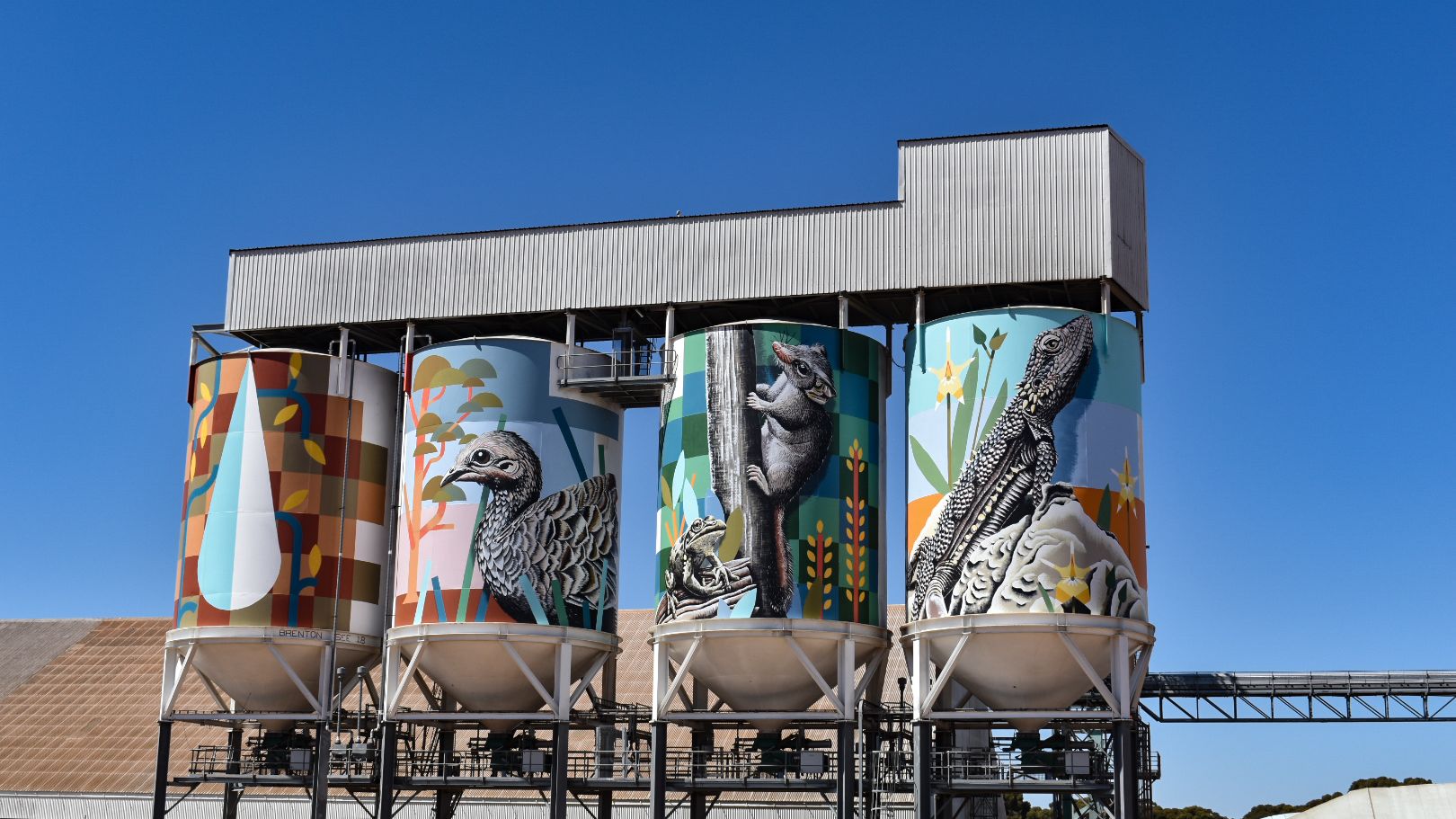
Standing tall over many almost forgotten towns, the silo art isn’t just a magnificent addition to the local landscape; for many communities and towns it's a lifeline.
For your next holiday, leave the city lights behind and follow the stars, dream of everything impossible and live life to the fullest in a quaint town with a lot of history, who knows what you'll find?
Original photos by Lila Greyling
Produced by Journalism and Sports Media students;
Published by the Faculty of Arts and Design, University of Canberra
